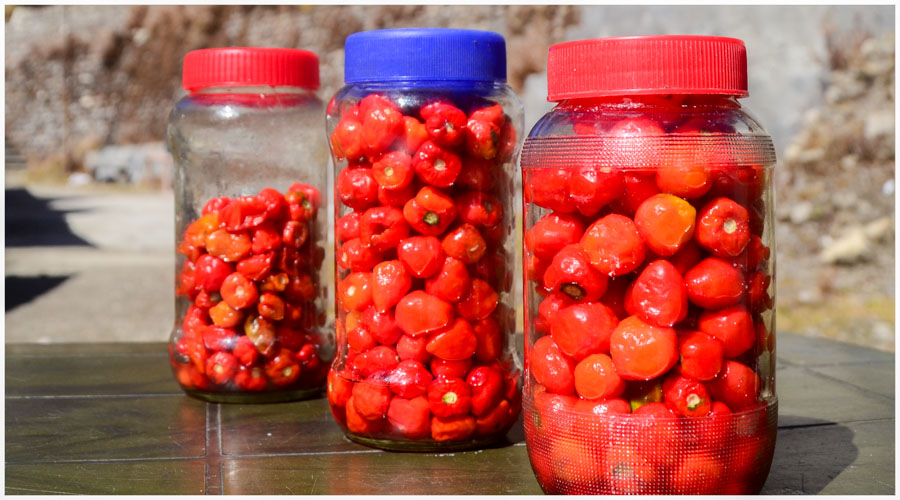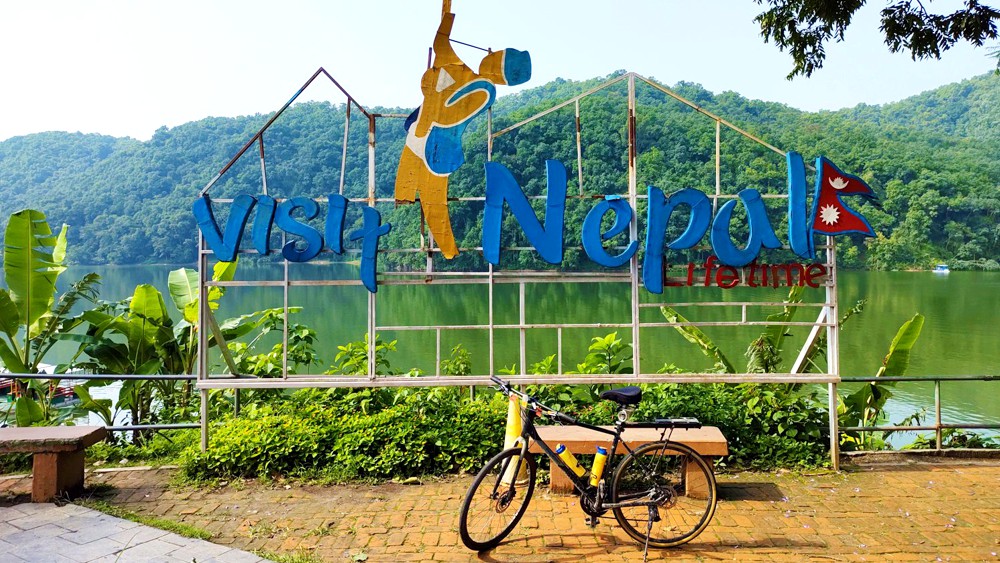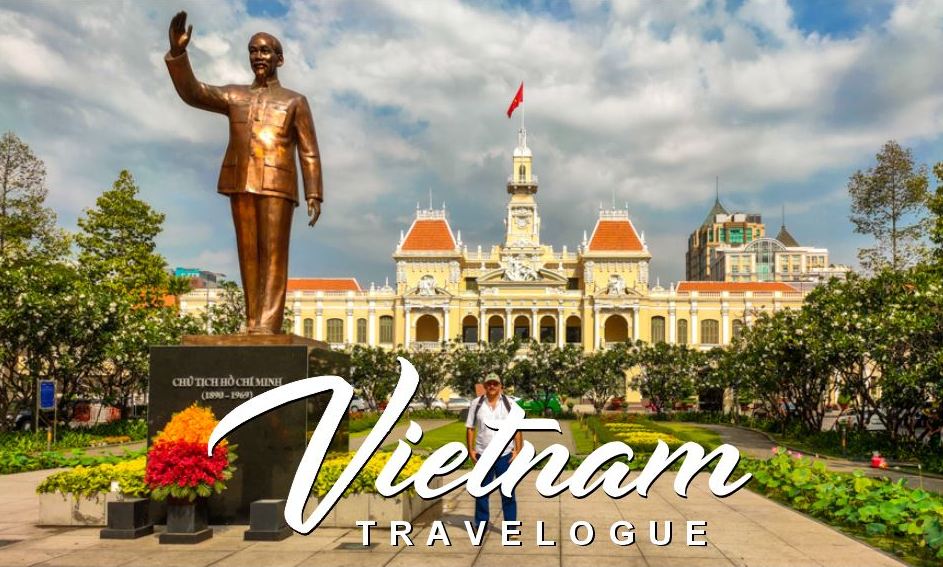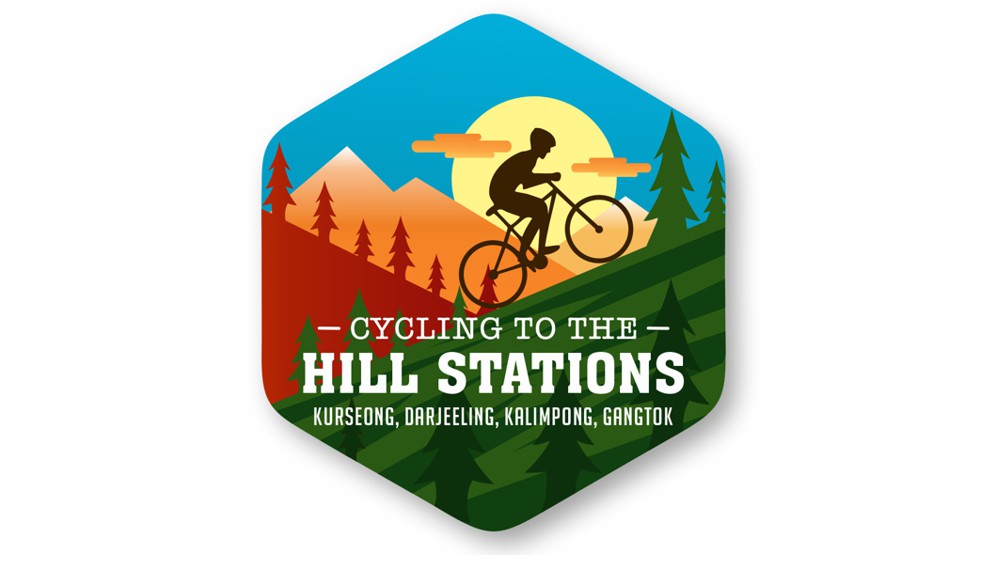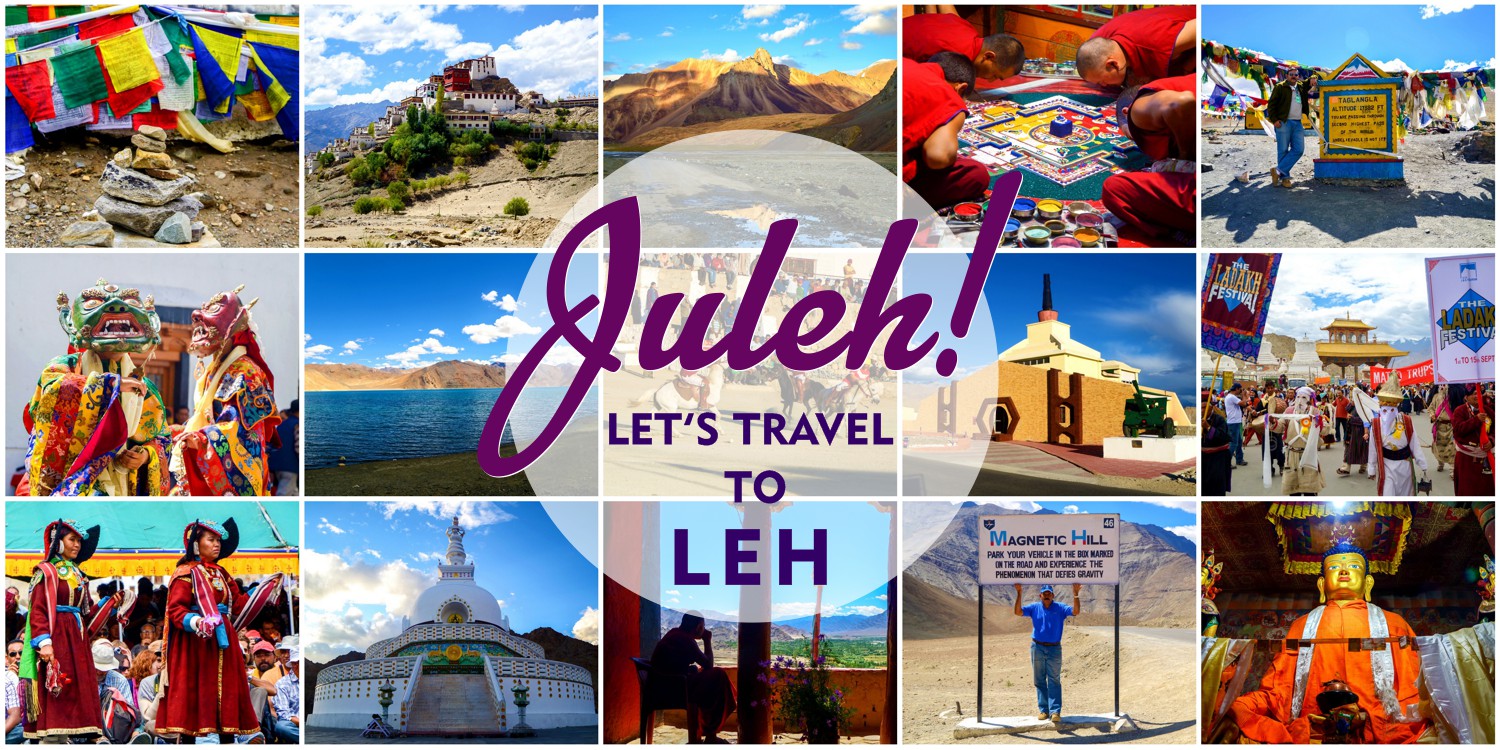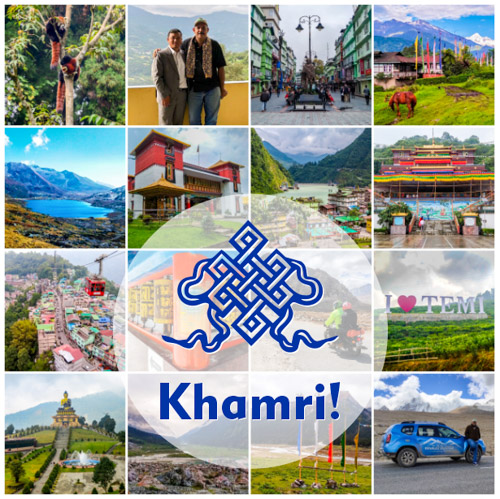
This lockdown, though traumatic, proved highly useful for everybody with an unfinished to do list. A great time to learn a new skill, brush up on an old one or to visit, albeit virtually, the brother state of the Seven Sisters in the North East: Let’s Travel to Sikkim, the destination that has been on my bucket list for 20 years. Khamri!
Toktse atem Karishma arey Renjyong sa sung translate maath bo ka..!!
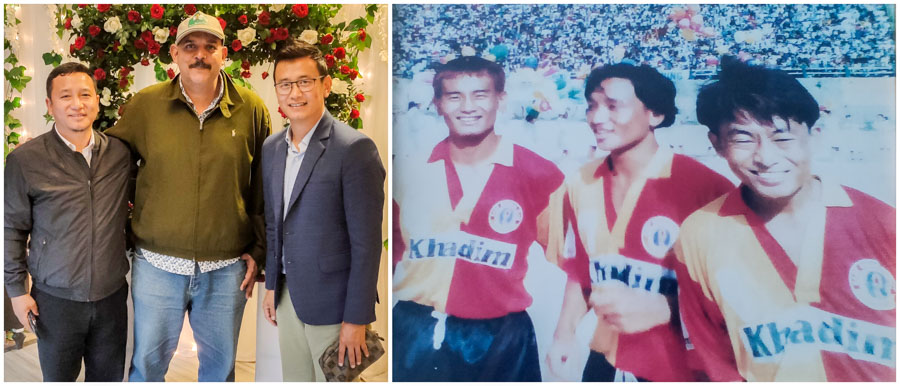
Let me explain. The year is 1999, two football players of Sikkimese origin leave East Bengal in search of better prospects and bigger challenges. One found his way to FC Bury in England, the other moved to Goa and joined Churchill Brothers. Here’s where I connected with Sherap Lepcha. Every telephonic conversation would end with the question – “When are you coming to Sikkim?” this fuelled my resolve to visit Sikkim. But my bucket list lay unfulfilled, till November 2018. I have since visited Sikkim twice in May and September of 2019 and have spent nearly 40 days in India’s only organic state.
??? Quiz Question
In the above photo, Sherap in the center and Bhaichung to his right are celebrating an East Bengal victory. Who is the player to his left, who also had an illustrious career with Goa’s Churchill Brothers??
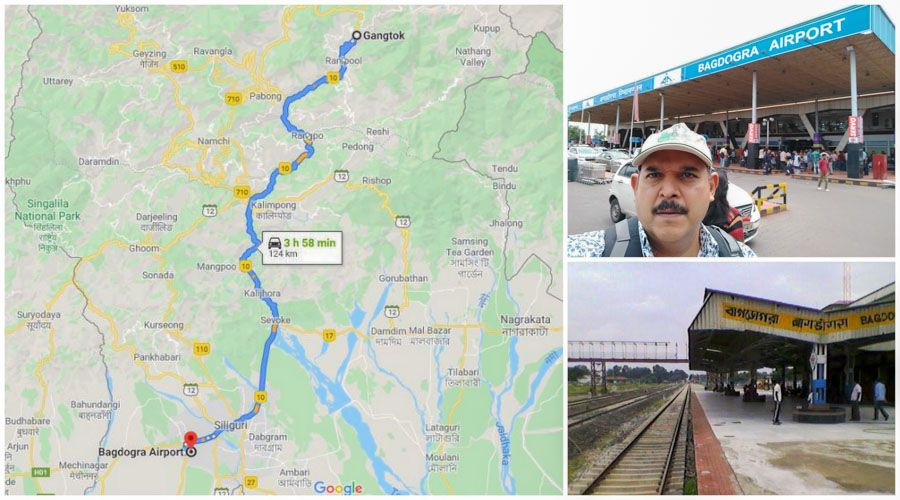
HOW TO GET THERE:
Gangtok, the Capital of Sikkim
The closest functioning airport is in Bagdogra, about 124 kms
The closest railway station is in New Jalpaiguri, Siliguri about 135 kms
Gangtok is accessible via road from the airport/ railway station, travel time is a minimum of 4 hours, this depends on the road conditions (Sikkim has the narrowest roads and long traffic jams are very common with the roads being the worst during the monsoons due to landslides)

You can book your vehicle online from – www.wizzride.com (have used twice), www.metta.taxi or hire one of the numerous taxis waiting outside the airport.
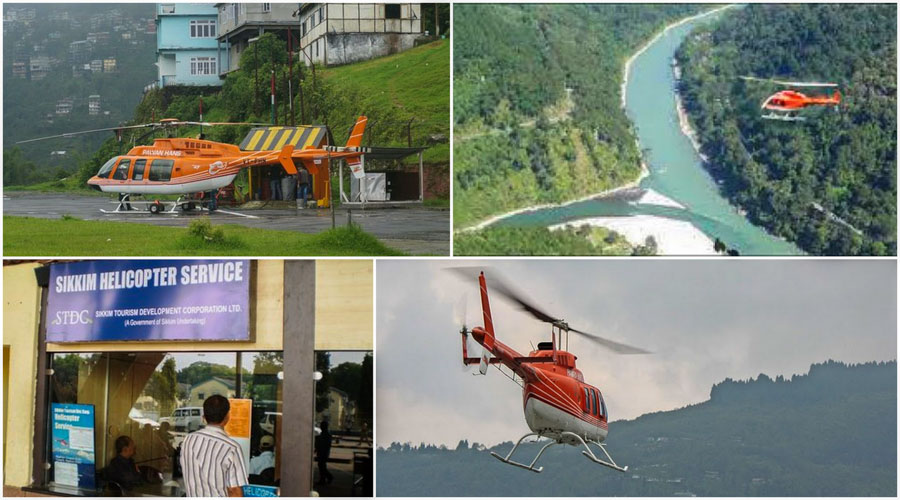
There is a helicopter service available to and from the airport in Bagdogra and Gangtok, I have personally not availed of this facility yet.
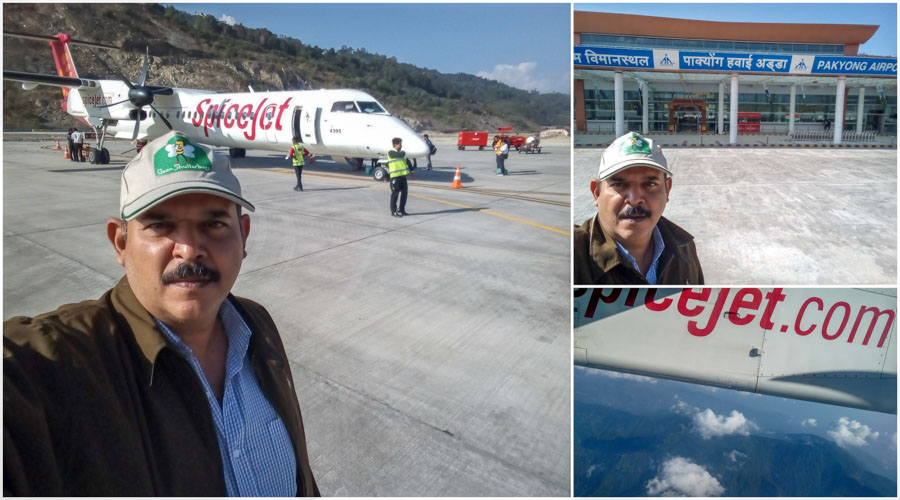
The alternative airport at Pakyong, about 30kms from Gangtok was shut down a few months after it’s launch due to operational safety issues.
Spice Jet operated a 70 seater Bombardier turboprop plane once a day to Kolkatta. I flew from Pak – Kol in November 2018.
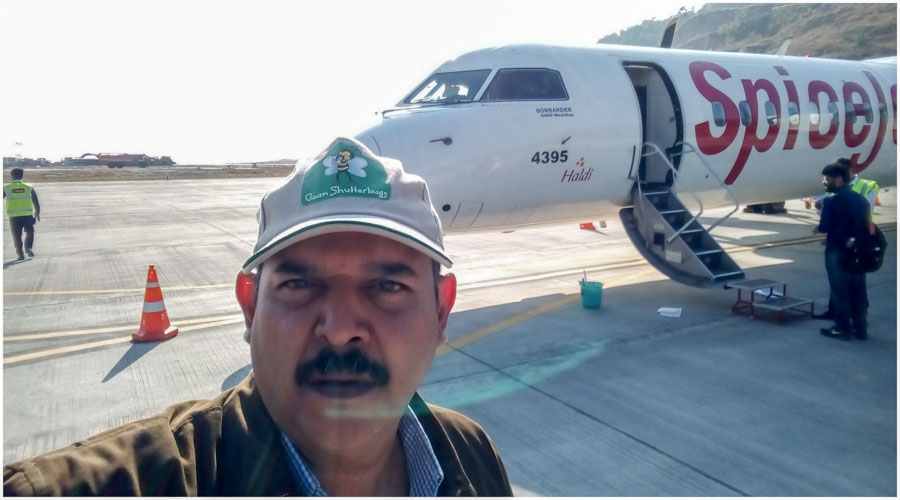
FYI – Did you know that all Spicejet planes are named after spices. The one I flew on was named “Haldi”.
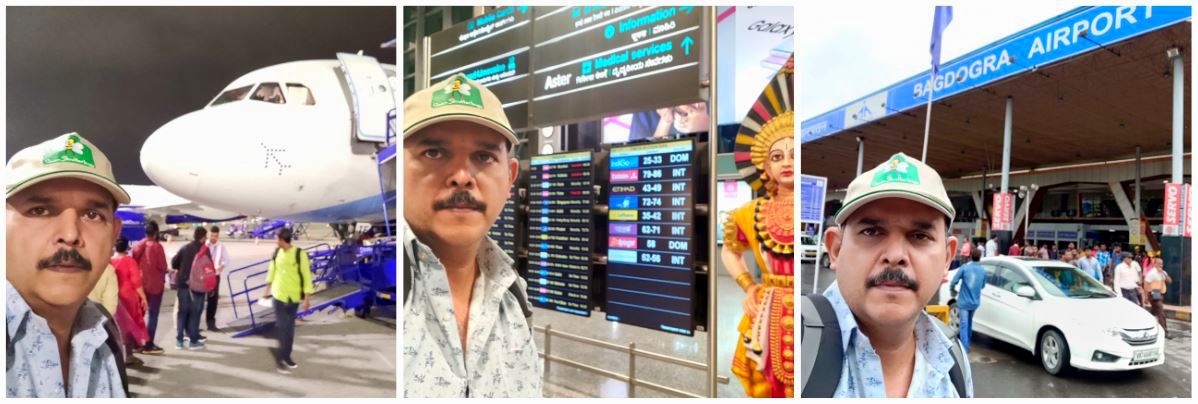
HOW I GO
Goa – Bangalore
Bangalore – Bagdogra
Bagdogra – Gangtok
Bagdogra airport is connected to all the major airport in India.

The Coronation Bridge in Sevoke deserves a pit stop, if travelling by road to Gangtok from Bagdogra. The bridge spans across the Teesta. Locals, however, refer to the bridge as ‘Baghpool’ meaning ‘tiger bridge’ because placed at one of it’s portals are 2 colourful tiger statues. Named to commemorate the coronation of King George VI and Queen Elizabeth in 1937, the bridge was completed in 1941. The foundation stone of the bridge was laid by John Anderson, the then Governor of Bengal, on 5th November 1937.
read more: https://en.wikipedia.org/wiki/Coronation_Bridge
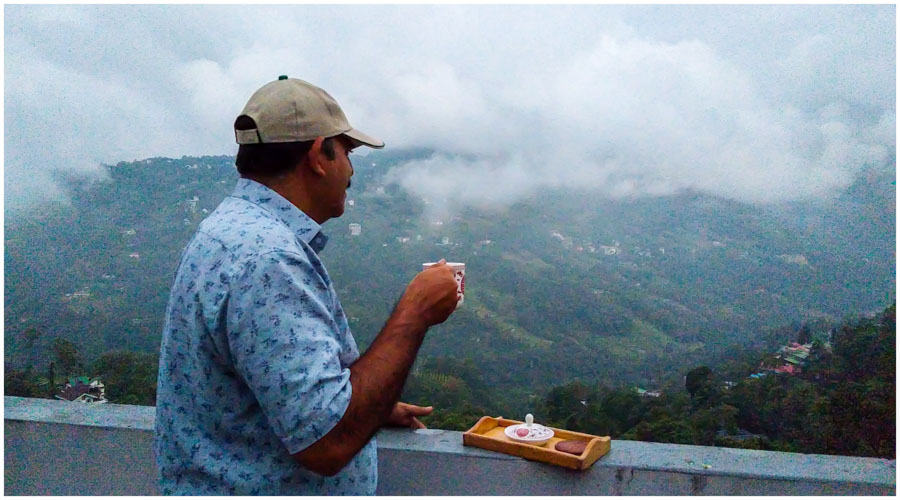
WHERE TO STAY:
MG Marg is the town centre of Gangtok, bustling with life, packed with plenty of hotels and homestays to choose from.
I stayed with Sherap and his family in Gangtok and once in Tingvong (North Sikkim) at their homestay, but more on that later.
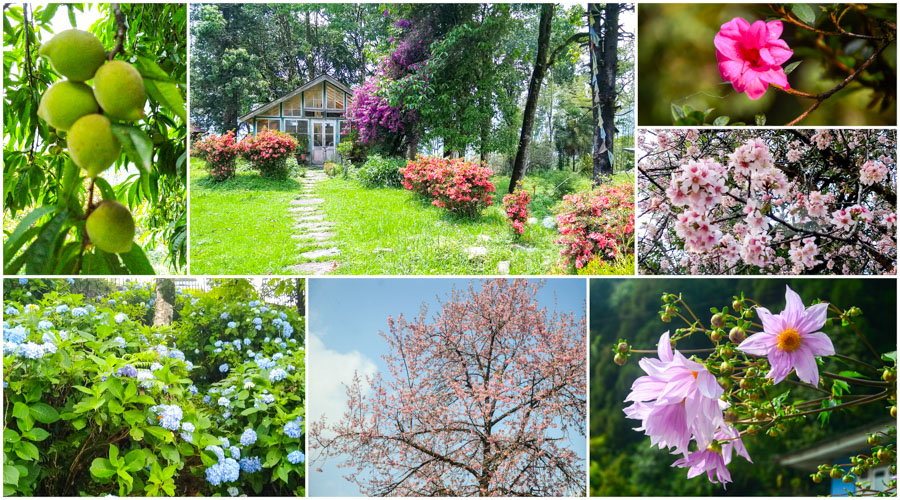
IDEAL TIME TO VISIT:
The period between March to June and September to November is when Gangtok is at its best.
During the Dushera holidays, 80% of Gangtok’s populace returns to their native villages and clears the roads of congestion and is an ideal time to visit.
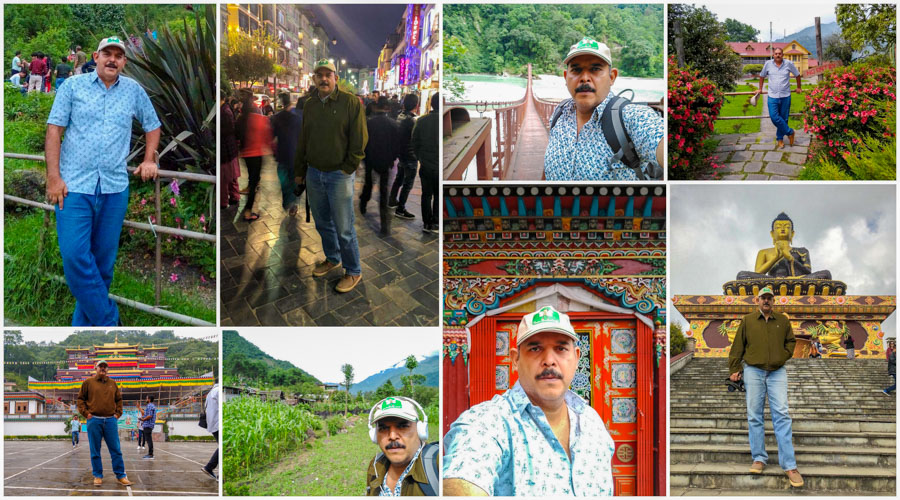
PLAN A HOLIDAY IN SIKKIM:
As I mentioned earlier, I spent a leisurely 40 days in Sikkim but considering a short getaway, most visitors use the following itinerary:
Darjeeling – 2 days
Kalimpong – 2 days
Gangtok (including Nathula Pass) – 3 days
South Sikkim (Ravangla, Temi Estate, Pelling) – 2 days
North Sikkim (Lachen & Lachung) – 2 days
Tingvong – a Lifetime
If visiting the region, Bhutan is a wonderful addition to the circuit.
I have not visited Darjeeling & Kalimpong as yet.
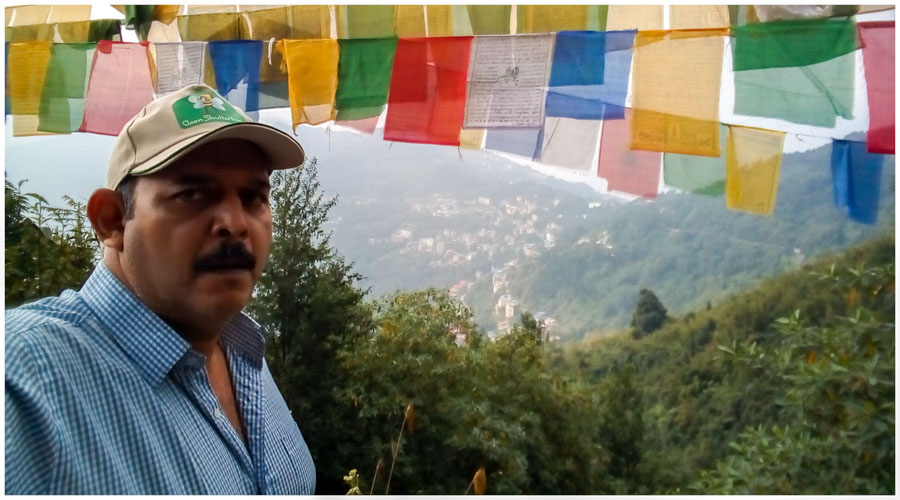
THINGS TO DO IN GANGTOK:
(as per personal preference)
Days required: 2 or 3
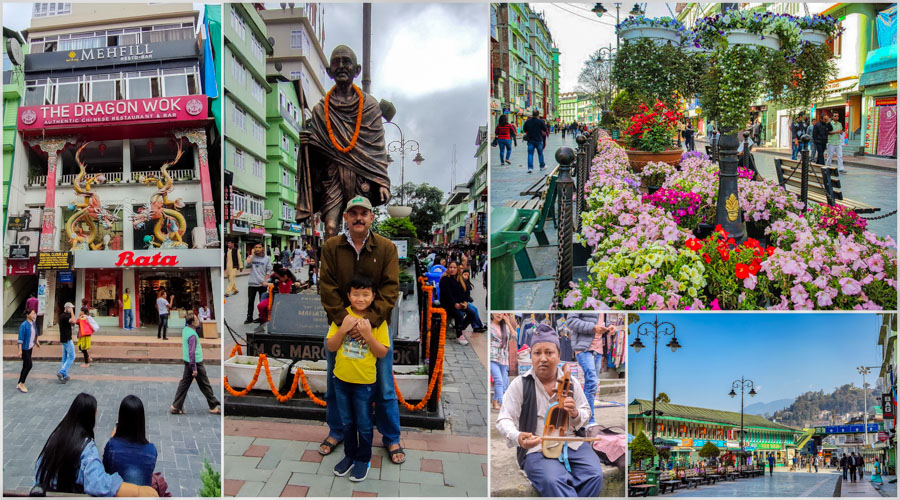
1. M.G MARG
MG Road is the buzzing heart of Gangtok. The kilometer wide boulevard is pedestrian-only zone where vehicles are prohibited. Lined with trendy restaurants, bakeries, food stalls, stores selling luxury goods, souvenir and pop-up-shops, youngsters jamming up on the street – it is literally the most happening place to be. And if lucky, you get to meet the winning contestant from the Miss Sikkim pageant.
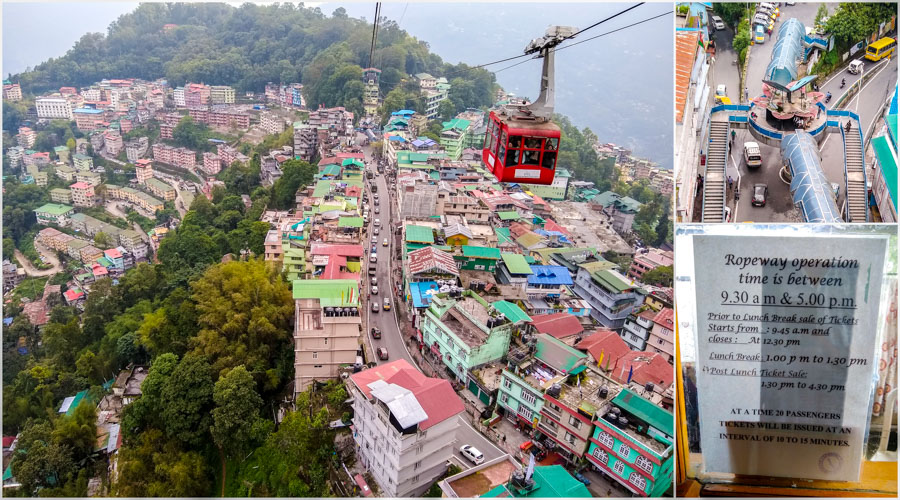
2. GANGTOK ROPEWAY
The 2 km cable car ride (back & forth) offers a bird’s eye view of Gangtok. Each cable car can transport upto 24 passengers. The ticket price includes the two-way ride and awesome vistas, both ways, guaranteed. However, this 15 minute ride is not limited to only viewing the city; if the weather is good, brace yourself for a breath taking view of Khangchendzonga.
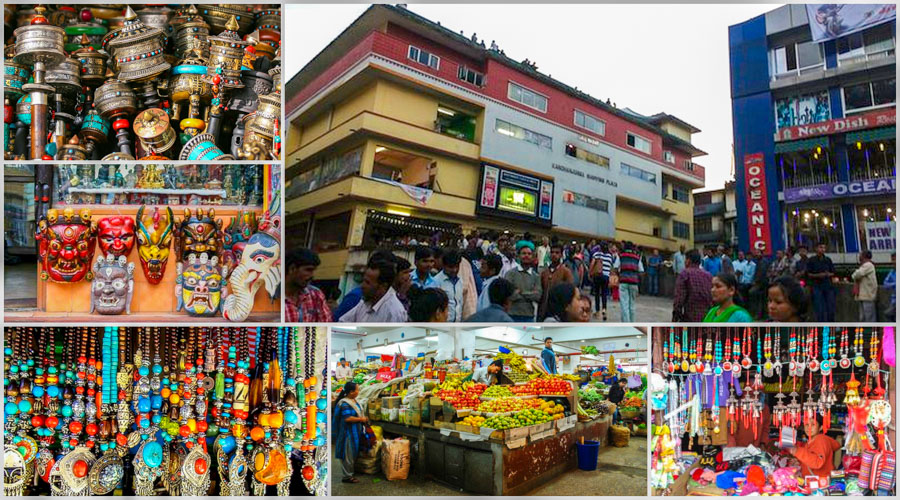
3. LAL BAZZAR
Located just below MG Marg, local artisans and farmers assemble to bargain, gossip or sell commodities and produce. This is the best place to buy souvenirs and far more affordable than MG Marg. Check out the Khangchendzonga Shopping Plaza.
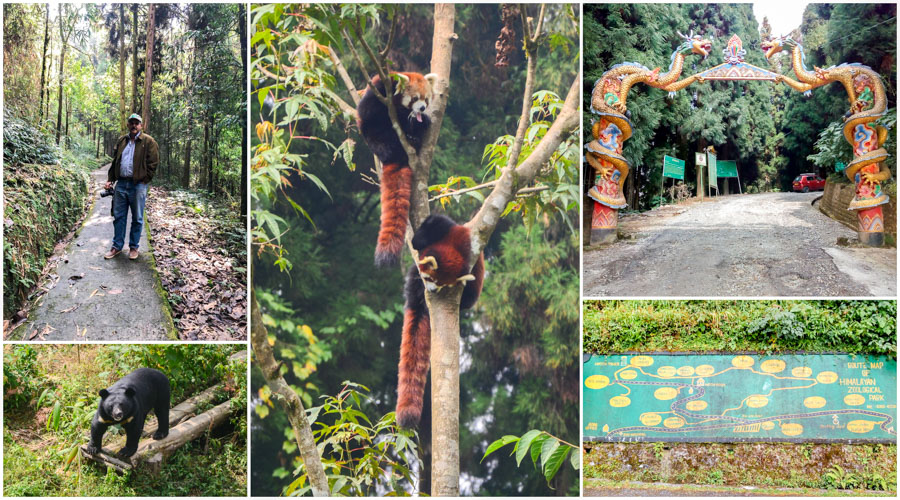
4. SIKKIM HIMALAYAN ZOOLOGICAL PARK
Spread over 230 hectares of forested land with elevations ranging from 6,500 t0 8,000 feet, this park is home to Himalayan fauna species surrounded by their natural habitat. The residents include Himalayan Monal Pheasants, Snow Leopard Cats, Gorals, Himalayan Palm Civets, Himalayan Black Bears, Crimson-Horned Pheasants and the Himalayan Red Panda – Sikkim’s state animal.
Involves quite a trek, to be able to fully appreciate the park and its inhabitants.
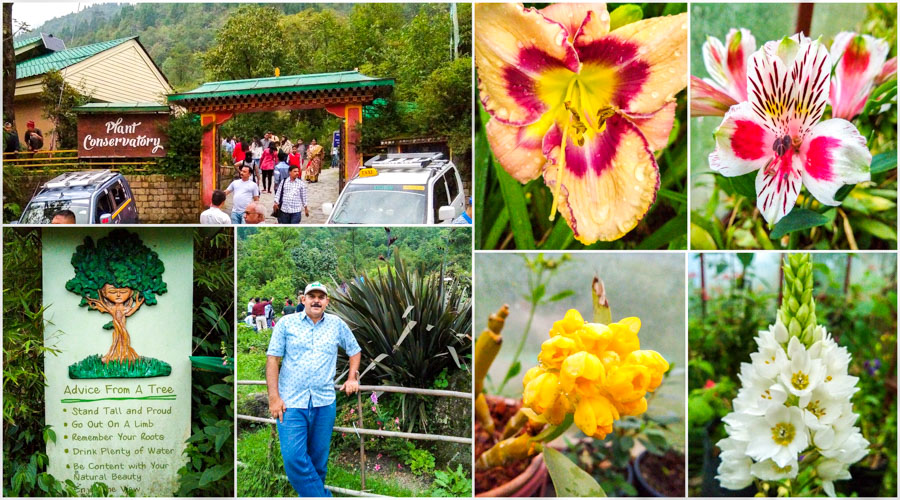
5. PLANT CONSERVATORY
With the backdrop of the mighty Himalayas the conservatory is home to beautiful ponds and bridges, encompassed in lush green. The trees are interspersed with flowering plants like Hydrangeas, Orchids, Rhododendrons, Azaleas, Magnolias and Daylilies. When in full bloom, this garden is a multi-sensory treat.
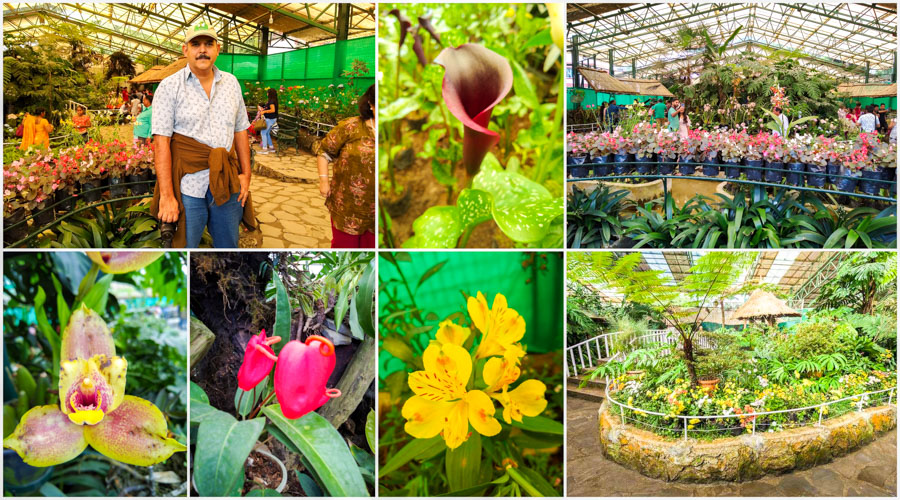
6. RIDGE PARK AND THE FLOWER EXHIBITION CENTRE
Over 4000 varieties of flowering plants grow in Sikkim, including 600 species of Orchids and 30 types of Rhododendrons. If you want to take a look at some of these blooms, it is a good idea to visit the Ridge Park and the Flower Exhibition Centre.
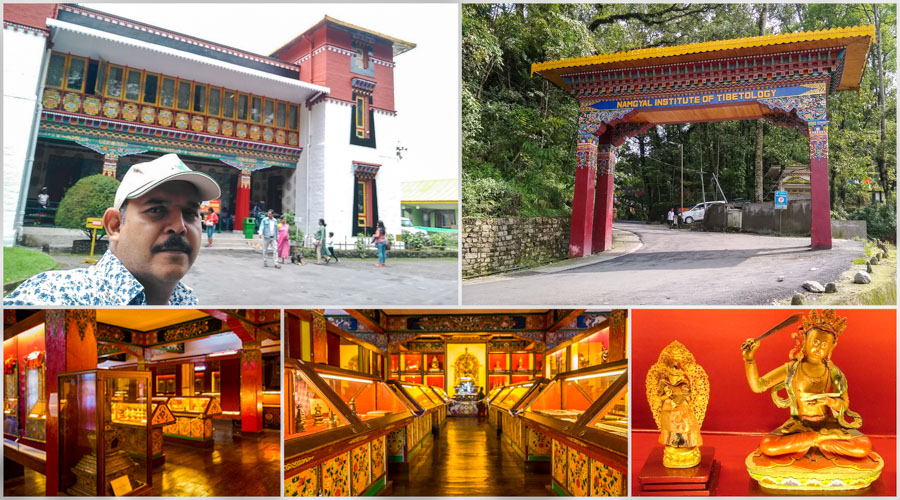
7. NAMGYAL INSTITUTE OF TIBETOLOGY
Houses an extensive collection of literature on Tibetan Buddhism and has ongoing research programs in Tibetology. The institute’s museum has a fascinating collection of cultural and religious artefacts, one of the largest outside Tibet.
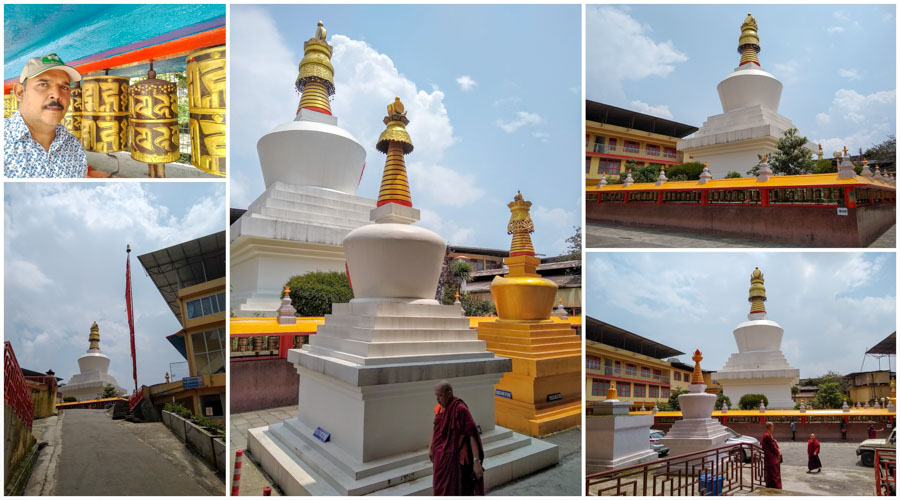
8. DO-DRUL CHORTEN
The do-drul Chorten was built by Trulshi Rimpoche, head of the Nyingma order of Tibetan Buddhism, in 1946, and is located about 500 meters above the Namgyal Institute of Tibetology. The deity enshrined on top of the chorten stupa is known as Dorjee Phurpa or Vajra Kilaya. There are 108 Mani-Lhakor (prayer wheels) that are rotated clockwise while chanting ‘Om Mani Padme Hum’ to invoke the Bodhisattva.
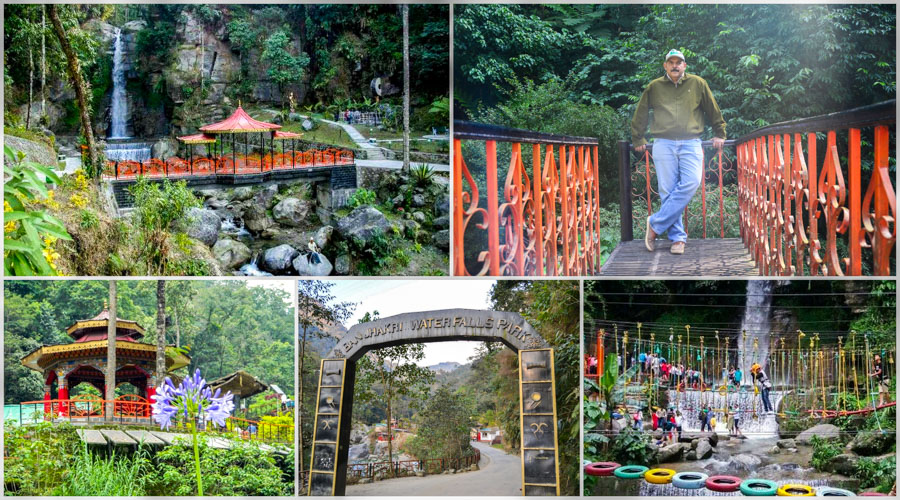
9. BANJHAKRI FALLS
A popular picnic spot, the falls come complete with a manmade lake, a park based on the Shaman Culture, structures styled in Sikkimese architecture and gazebos. The park is about 7 kilometres from Gangtok.
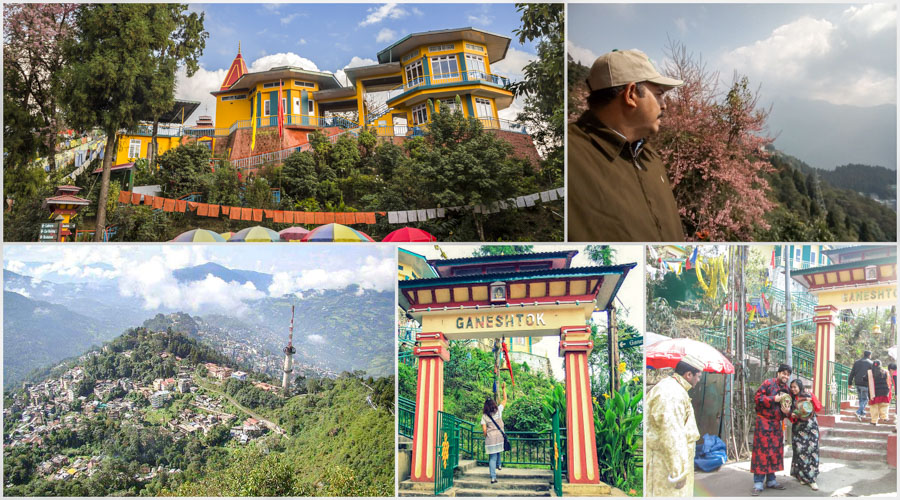
10. GANESH TOK
The temple is located about 7 kms from Gangtok, next to the Plant Conservatory and offers a bird’s view of the entire city, Mt. Khangchendzonga and Mt. Siniolchu in the distance.
When you are here do not forget to wear the traditional Sikkimese dress and have your photos clicked. Highly recommended.
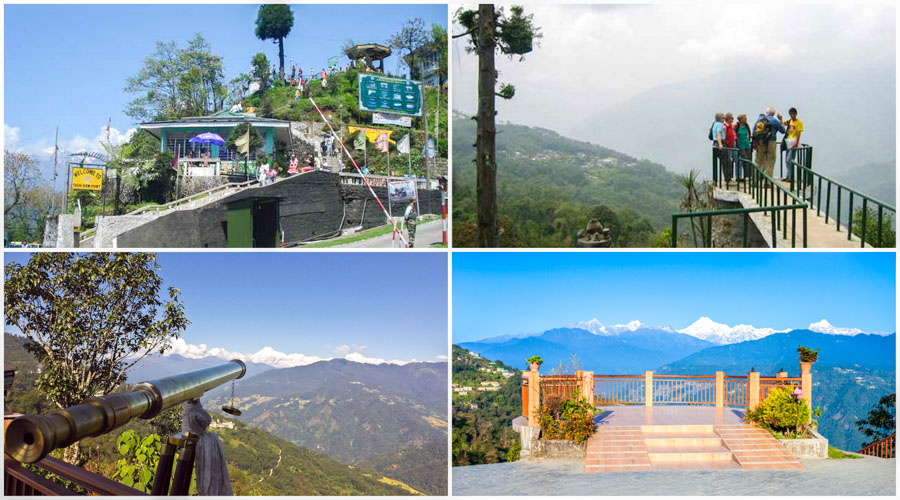
11. TASHI VIEW POINT
Located in Tashi, about 8 kms from Gangtok, the point attracts tourists for the exceptional views of the Kanchenjunga snow peaks on a clear day. Tashi View Point is known for its gorgeous sunrise as well as the mild sunset. As the day progresses you will find the peaks illuminated by changing the colours of sun rays.
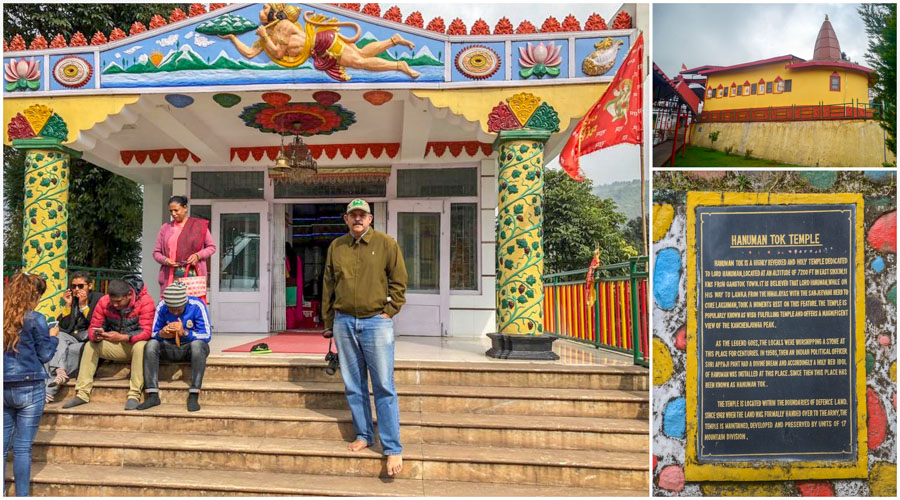
13. HANUMAN TOK
At an altitude of 7,200 ft and at a distance of 11 km from Gangtok town, legend says that Lord Hanuman took rest for a moment at this place when he was on his way to Lanka from the Himalayas.
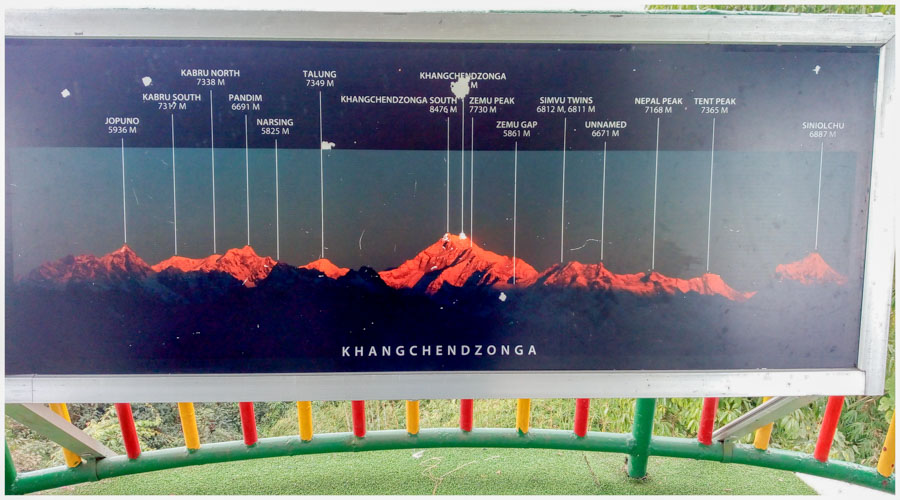
On a clear day you can get breath taking view of Kanchenjunga range from the viewing platform.

Having toured Gangtok, come evening, you could try your luck at Sikkim’s Deltin Denzong casino. Feel free to tell the manager you are my friend.
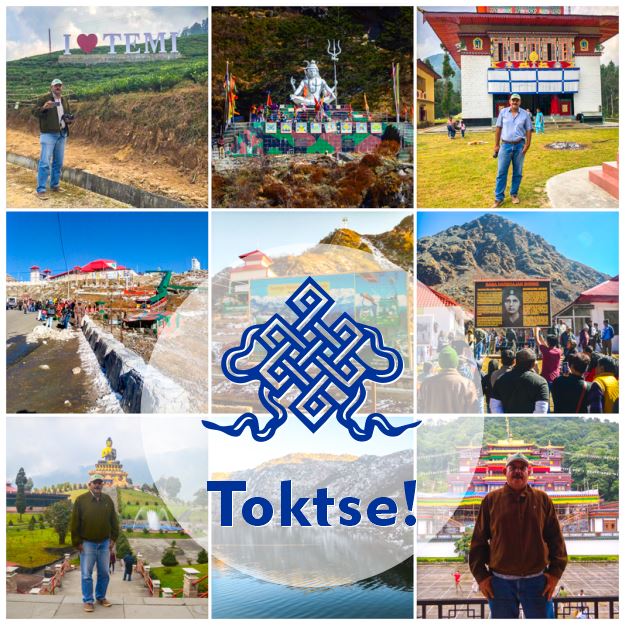
Tomorrow we will explore the rest of Sikkim: Let’s Travel beyond Gangtok. Toktse!
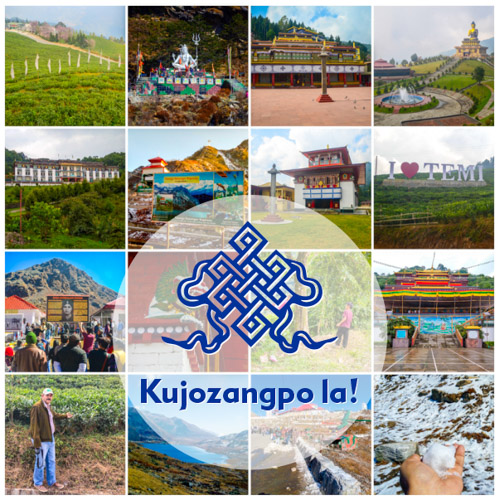
Today Let’s Travel outside Gangtok. Visit couple of the more famous monasteries. Try and sneek into China. Pick some organic tea leaves in South Sikkim. And for some adrenaline rush go paragliding. Kujozangpo la!!!
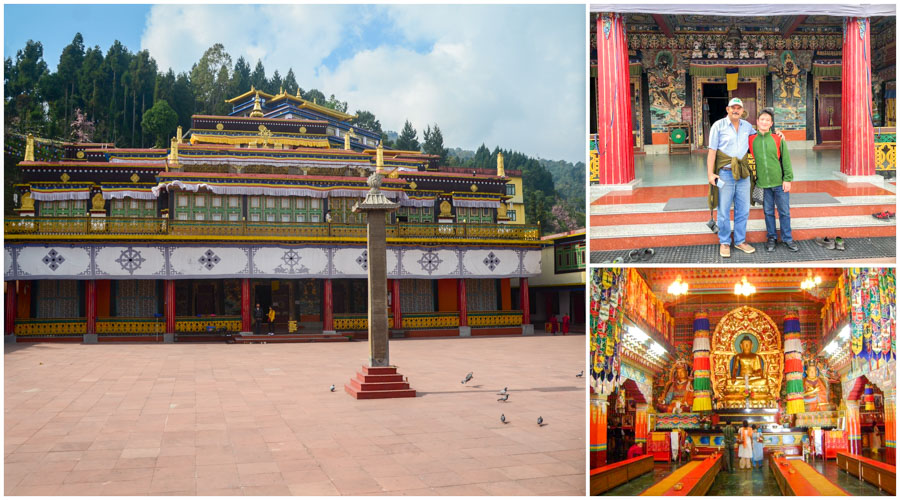
RUMTEK MONASTERY
A focal point for the sectarian tensions within the Karma Kagyu school of Tibetan Buddhism that characterize the Karmapa controversy, the Rumtek monastery located about 25kms from Gangtok is one of the largest in Sikkim and belongs to the Kargyu sect of Buddhists which originated in the 12th century in Tibet. The architecture of the monastery is one of the finest in the world and resembles the original one in Tsurphu, Tibet.
The monastery can be accessed by a half kilometer uphill walk from the base gate, worth it for the picturesque surrounds.
Proof of identification required for security purposes.
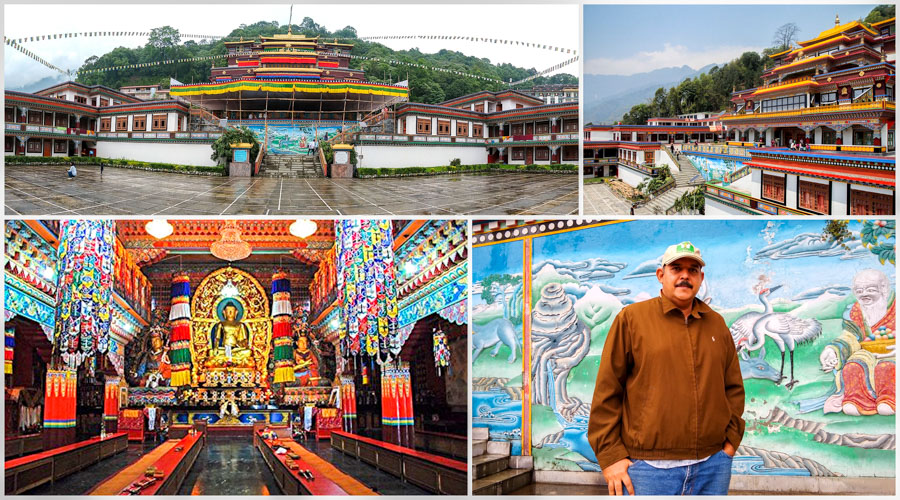
LINGDUM MONASTERY
Completed in the year 1999, the Lingdum Monastery, also known as Ranka Lingdum or Pal Zurmang Kagyud Monastery is a Buddhist monastery near Ranka, 20kms from Gangtok. The retreat center is situated on a hillock.
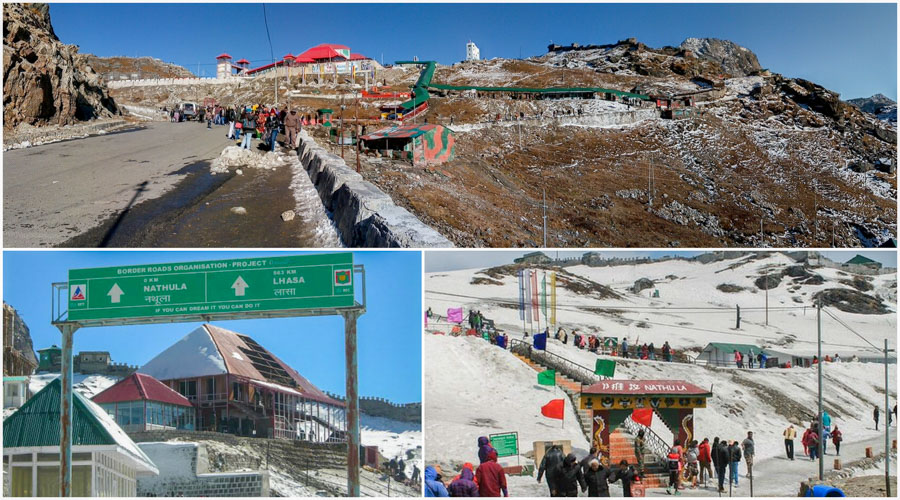
NATHULA
Nathu la Pass, about 56 kms from Gangtok, is among the highest motorable roads in the world, at an elevation of 4,404. During the 20th century, the pass acted as the primary route for the trade of fur, wool and spices between Sikkim and Tibet. Today, it is considered as the Indo-China border and serves as one of the primary trade routes between India and China. There are military bunkers on either side, with an entrance gate to both countries.
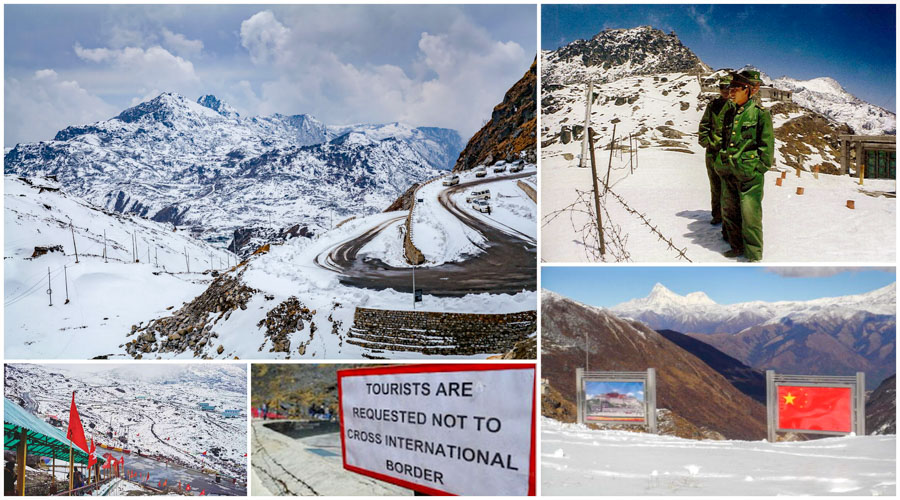
NATHULA PASS PERMITS & PROHIBITIONS:
Visiting Days: Wednesday – Sunday
Only Indian nationals with a valid permit can visit the Nathula Pass. A permit can be obtained by applying to the Tourism and Civil Aviation Department. You can apply through a registered travel agency.
Foreign nationals are not allowed to visit it.
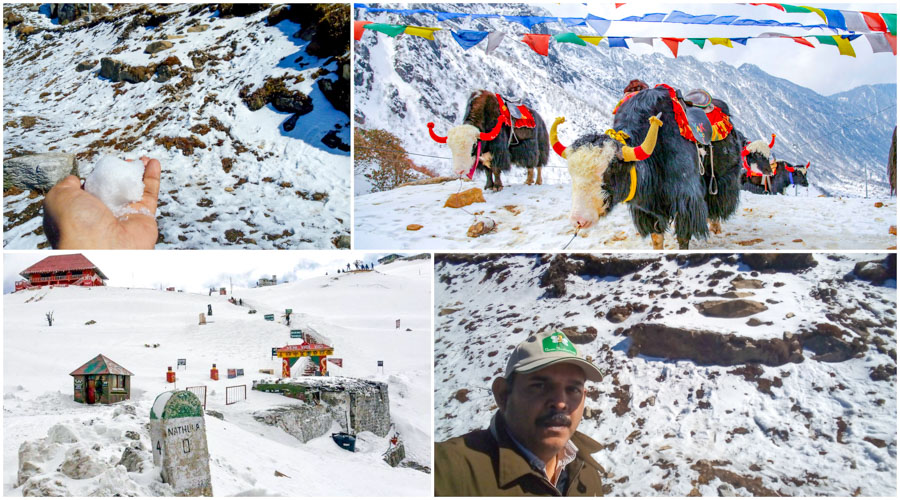
WEATHER & OTHER CONDITIONS:
The temperature drops as low as -25°C during the winter, the minimum temperature during the summer months is about 10°C. June to September is the off-season because of the monsoon and the looming threat of landslides.
Since the altitude is so high, be ready to adapt to the receding oxygen levels.
Ideal season to visit: Summer (April – mid-June) & Autumn (October – November)
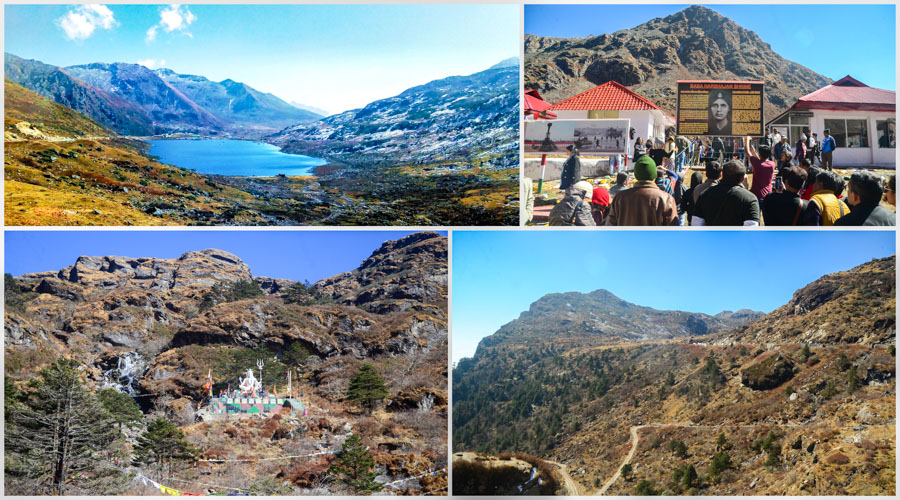
BABA HARBHAJAN MANDIR
The road from Gangtok to Nathula passes by the Tsomgo Lake, and the entire area, including the pass, has a beautiful cover of alpine flora.
The road to the pass is dotted with army settlements; visitors have an unparalleled view of the Chumbi Valley.
The recently constructed Baba Harbhajan Mandir is an interesting pitstop. If the weather is clear, the second-highest peak of Bhutan, Mt Chomolhari, is in clear view.
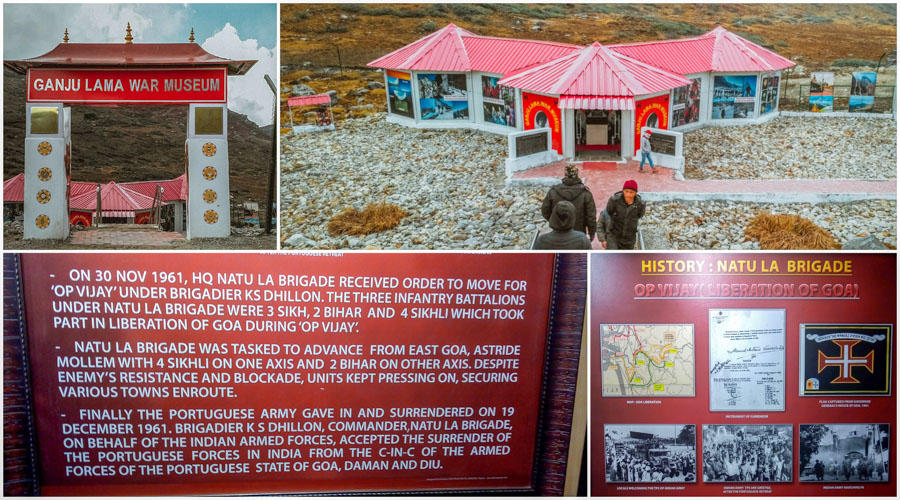
GANJU LAMA WAR MUSEUM
Did you know that the Natula Brigade was involved in Goa’s liberation during Operation Vijay??
Drop in at the war museum located close to the mandir to know more about the same.
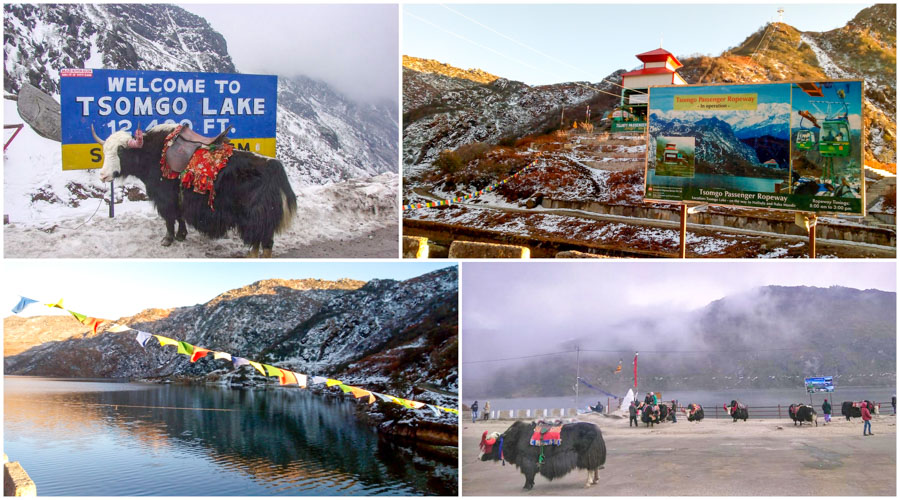
TSOMGO ROPEWAY
On the way back from Nathula, stop to take a ride on the ropeway that takes you over the snow cladded mountain or ride on one of the many Yaks around.
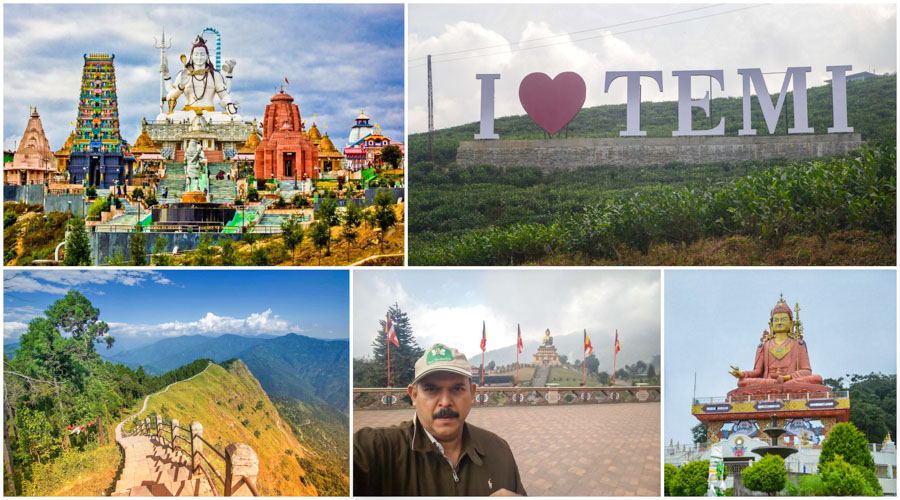
SOUTH SIKKIM
Days required: 2 or 3
Filled with places of interest, but I only scratched the surface, having visited Ravangla and Temi Gardens.
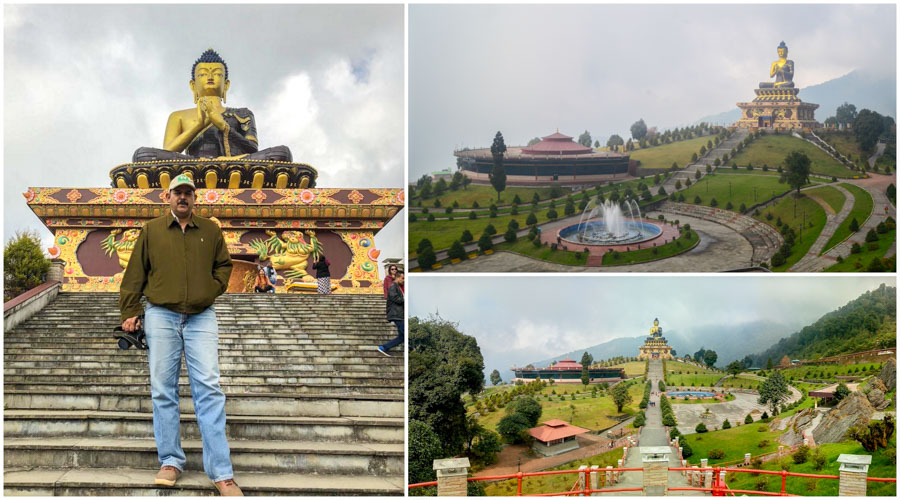
RAVANGLA BUDDHA PARK
The park features a 130-foot high statue of the Buddha as its centerpiece. The site was chosen within the larger religious complex of the Rabong Gompa, a centuries-old place of pilgrimage. Also, nearby is Ralang Monastery, a key monastery in Tibetan Buddhism. The statue was consecrated on 25 March 2013 by the 14th Dalai Lama and became a stop on the ‘Himalayan Buddhist Circuit’. The statue of the Buddha marks the occasion of the 2550th birth anniversary of Gautama Buddha.
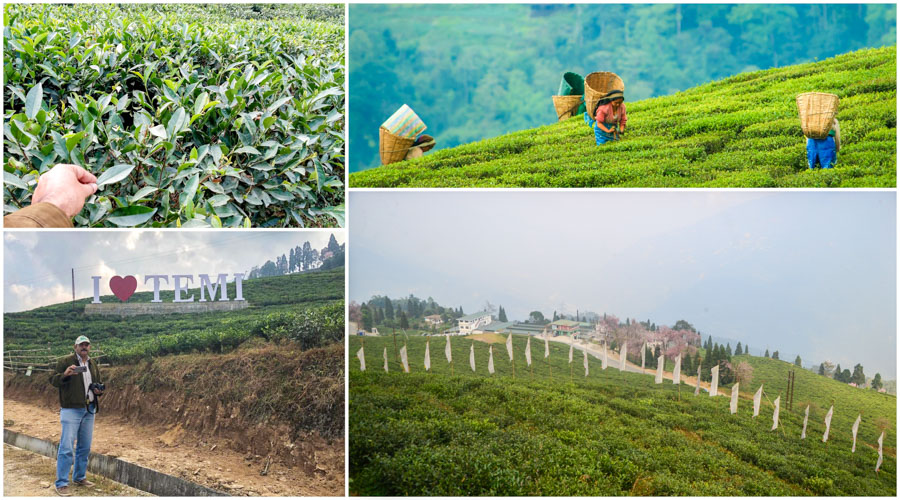
TEMI TEA ESTATE
Established in the year 1969 by the Government of Sikkim, Temi tea plants are growing along the steep slopes of the hills emerging from the Tendong Hills; ranging from 1200 to 1800 meters. The 177 hectare spread gardens of Temi produce the premium quality tea leaves using organic means.
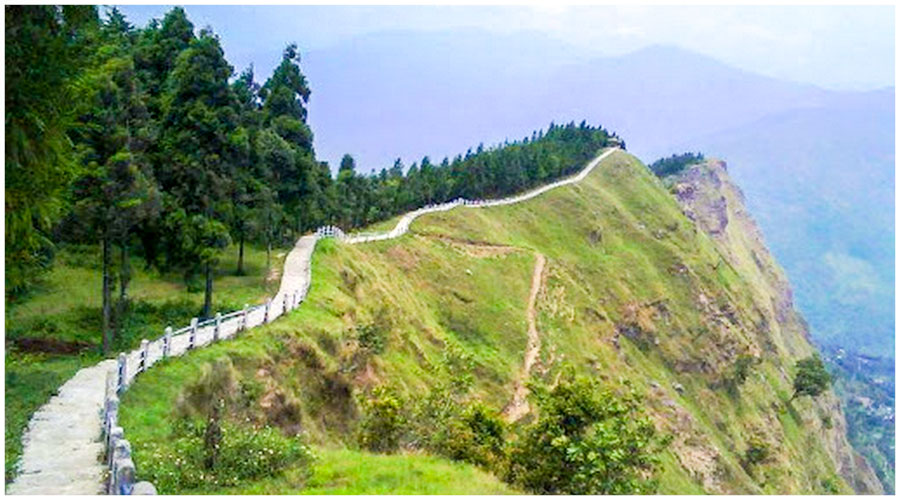
The following links will shed more insight on South Sikkim:
https://www.esikkimtourism.in/places-to-visit-in-ravangla
https://www.tourmyindia.com/blog/top-places-to-visit-in-south-sikkim
A treat for the adrenaline junkies : Dalle Khursani: Sikkim’s Red Hot Chilli Pepper
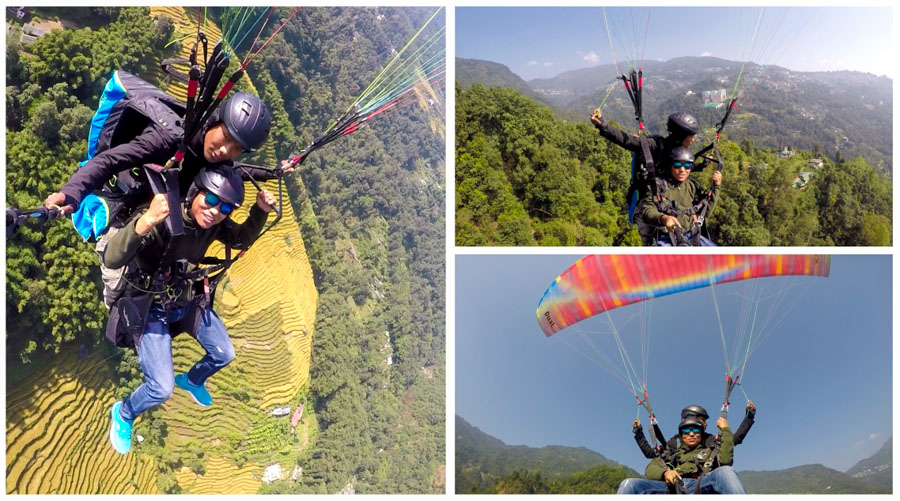
1. PARAGLIDING
To paraglide, no prior experience is necessary. A certified pilot accompanies all enthusiasts, thus taking care of the entire flight and its navigation.
Unfortunately as the maximum weight limit is 80 kgs, I have not been able to indulge in the sport. I guess it is something to look forward to during my next visit.
However, I did manage to convince my friend Pema Lepcha to fly. That’s him in the pics.
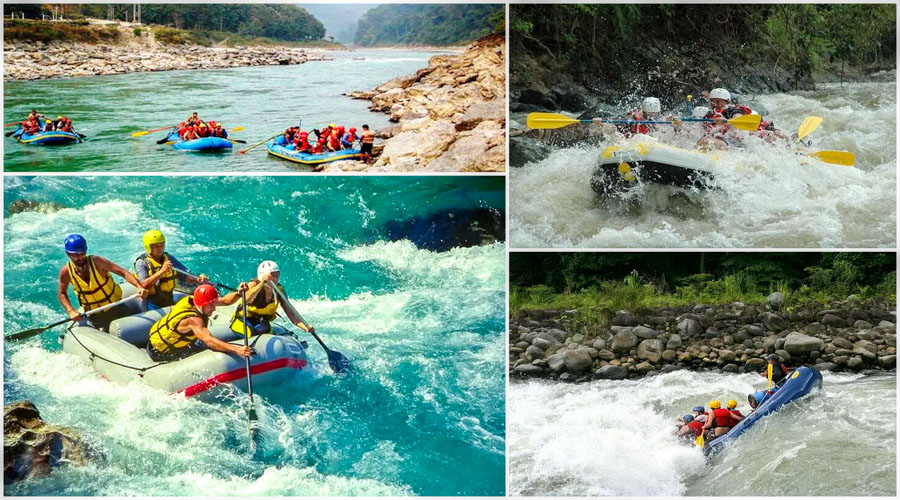
2. RIVER RAFTING
The rapids of the Rivers Rangit and the Teesta are graded at the international level of I to IV, rendering an experience here among the finest rafting stretches in the world. The river courses through gorges and valleys that offering spectacular views along the course. On my bucket list.

3. TREKKING
Boasting of immensely beautiful natural backdrops and vast expanses of wilderness, Sikkim is a haven for avid trekkers. With a number of blossoming trekking routes, Sikkim offers the enriching experience of exploring the picturesque valleys, expansive meadows, mountain passes, shimmering lakes, lush greenery and sparkling rivers. The best trekking tours in Sikkim are a glorious opportunity to scale the towering peaks and savor the adrenaline rush that keeps you going.
Since I’m not into trekking, I have not been, the steep 153 steps to my friend’s house itself takes my breath away.
You will find useful info here:
https://www.tourmyindia.com/treks/trekking-in-sikkim.html
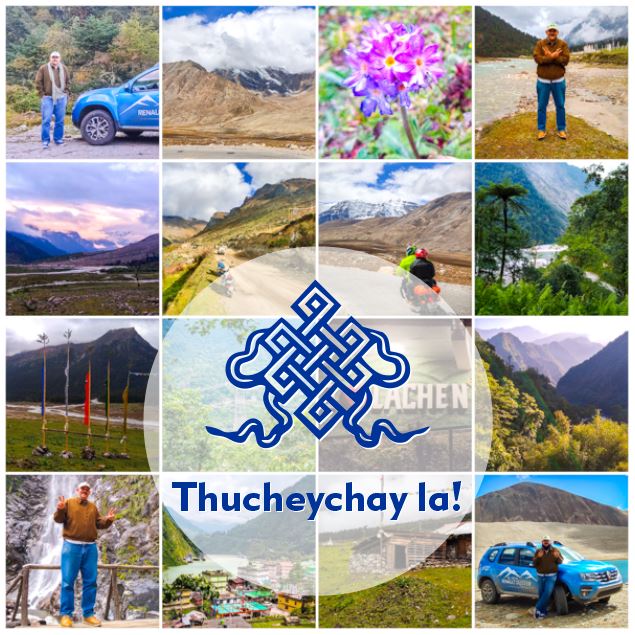
Tomorrow Let’s Travel to North Sikkim – Lachen, Lachung and beyond. Thucheychay la!!!
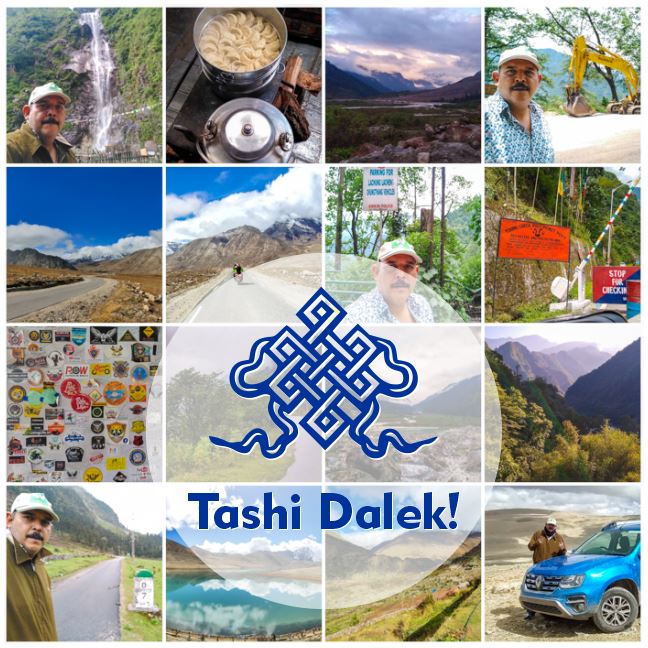
Tashi Delek!!!
Let’s Travel to NORTH SIKKIM today.
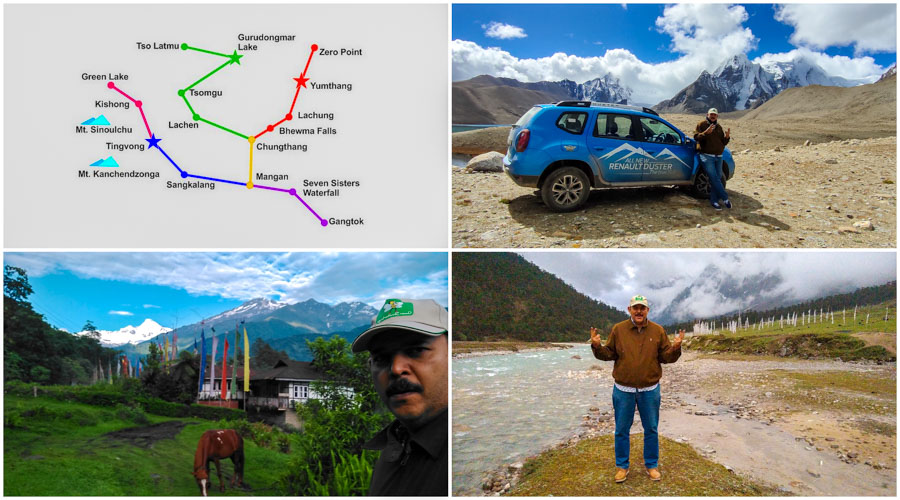
NORTH SIKKIM
Lachung (Yumthang Valley) and Lachen (Gurudongmar Lake)
Most tourists visit Lachung and Lachen as part of a 2 day package with a night stay at either place.
https://www.sikkimtourismindia.com/north-sikkim-tourism.html
https://www.tourmyindia.com/blog/top-places-of-tourist-interest-in-north-sikkim
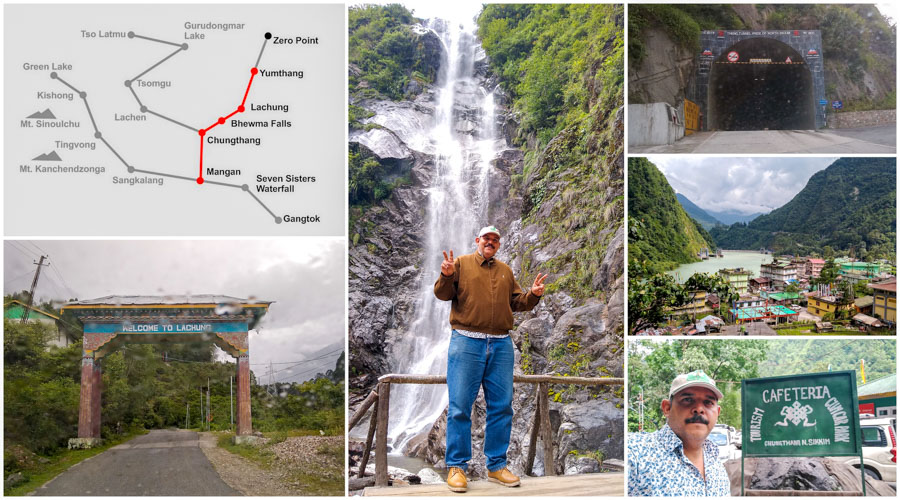
LACHUNG & YUMTHANG VALLEY
I visited in June 2019 with Chultim and his friends. We started from Mangan (the HQ of North Sikkim) around 1 pm after getting all the necessary permits and stopped at Chungthang for lunch. Along the way, we came across the Bhewma Falls.
Bhewma means ‘red snake’ in the local dialect and the water falls from a hight of 275 mts in three steps.
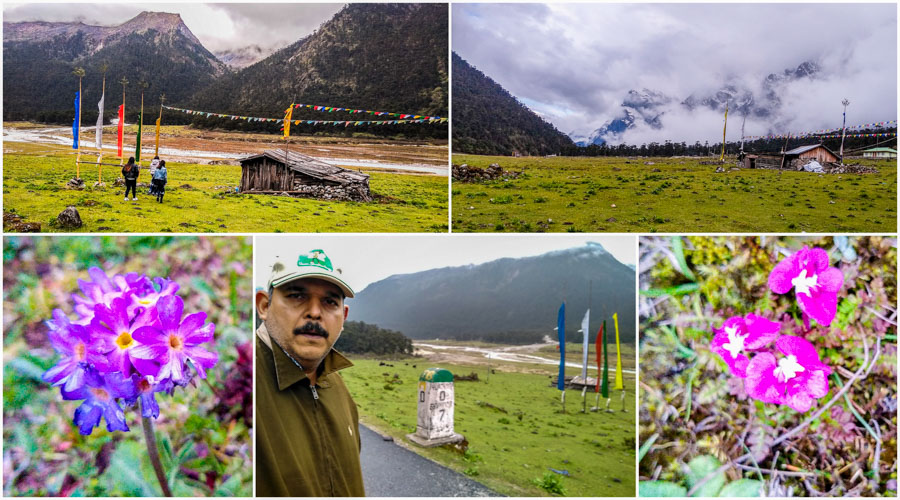
YUMTHANG
Also known as Valley of Flowers, Yumthang is situated at an elevation of 3,564 metres and is home to Shingba Rhododendron Sanctuary that has over twenty-four species of the Rhododendron flowers. Adding to the beauty is a tributary of River Teesta that flows past the valley. Unfortunately due to heavy snow and landslides that occurred a fortnight before most of the flower and plants were destroyed and we could not see any. We did not visit Zero Point as it was already getting dark.
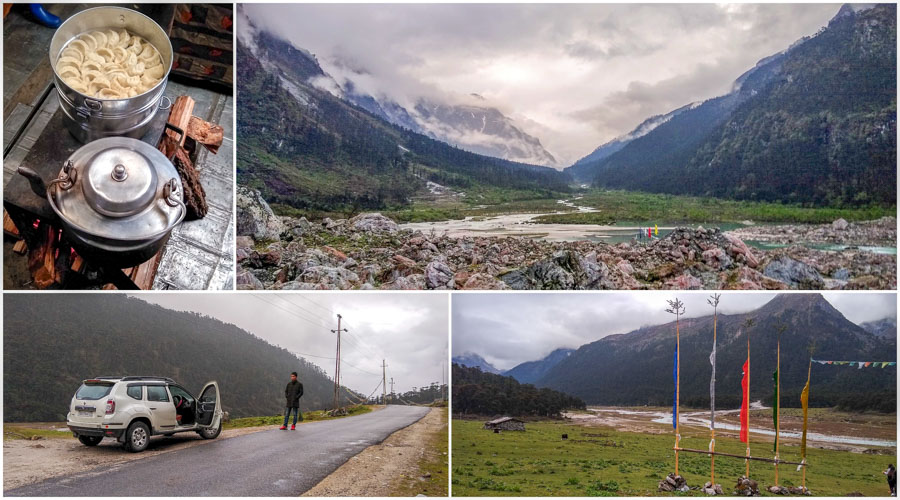
This link has a detailed description about the Lachung, Yumthang Valley and Zero Point and how to get there:
https://www.sikkimtourismindia.com/gangtok-yumthang-zero-point-tour.html
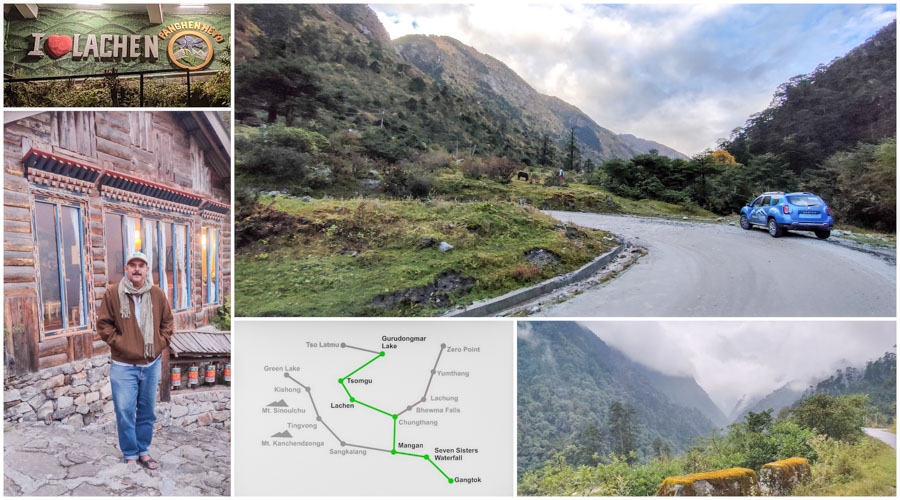
LACHEN AND GURUDONGMAR LAKE
I visited in October 2019 during my third trip to Sikkim. I went with Sherap, his wife and their two sons Chudok and Pema. We started from Gangtok in the morning and stopped for lunch at his sister’s home in Mangan.
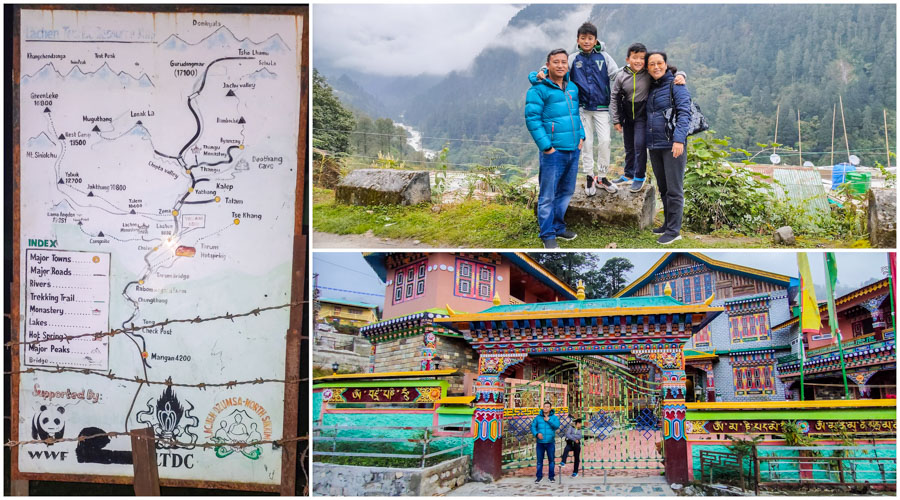
Arriving in Lachen we checked into a homestay belonging to Sherap’s friend, the evening was spent wandering around the village and the nearby monastery, getting the body to adjust to the altitude. We left early from Lachen enroute Gurudongmar Lake.
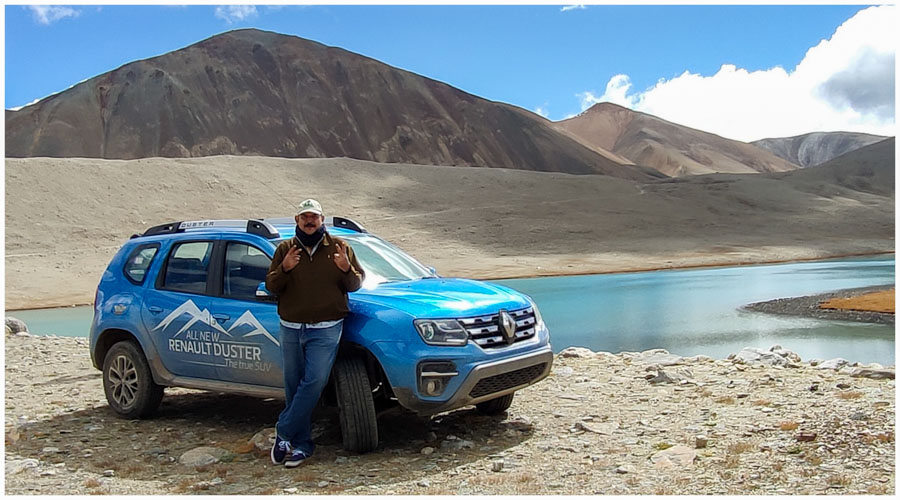
Around 100 kms and a 4 hour drive later, we reached the lake. On the return journey, we drove directly to Gangtok – a distance of 190 kms with a brief stopover for chai at Mangan.

GURUDONGMAR LAKE
Located at a height of 17,800 ft, is among the highest fresh water lakes in the world. Named after Guru Padmasambhava, the lake is considered to be sacred. This lake is just a few kilometers away from the Chinese Tibetan border.
While Indian tourists are allowed to visit the lake, foreigners need to get a special permit from the Ministry of Home Affairs in Delhi.
https://www.tourmyindia.com/blog/top-places-of-tourist-interest-in-north-sikkim
https://www.taleof2backpackers.com/sikkim
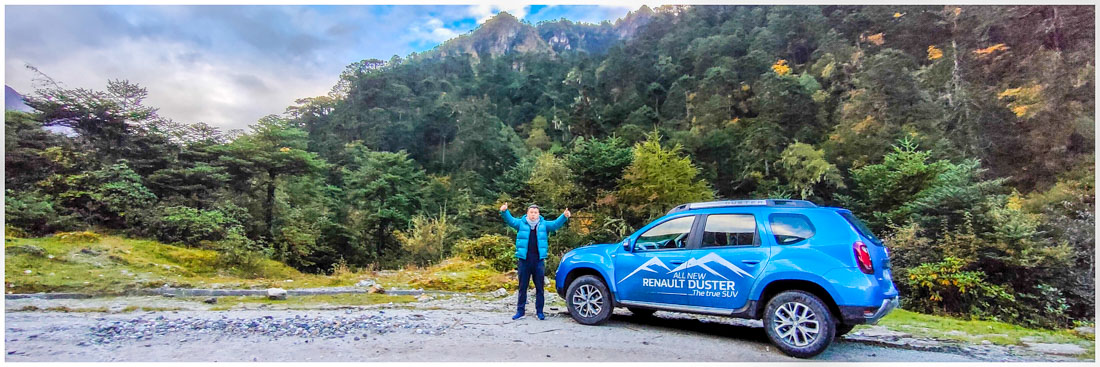
The journey from Lachen to Gurudongmar Lake is scenic with beautiful alpine pastures covered with rhododendron trees and as the ascent gets higher, the landscape turns rugged and barren. Enjoy these panoramic photos.
People who have travelled from Manali to Leh via the Rotang Pass will find the landscape similar.





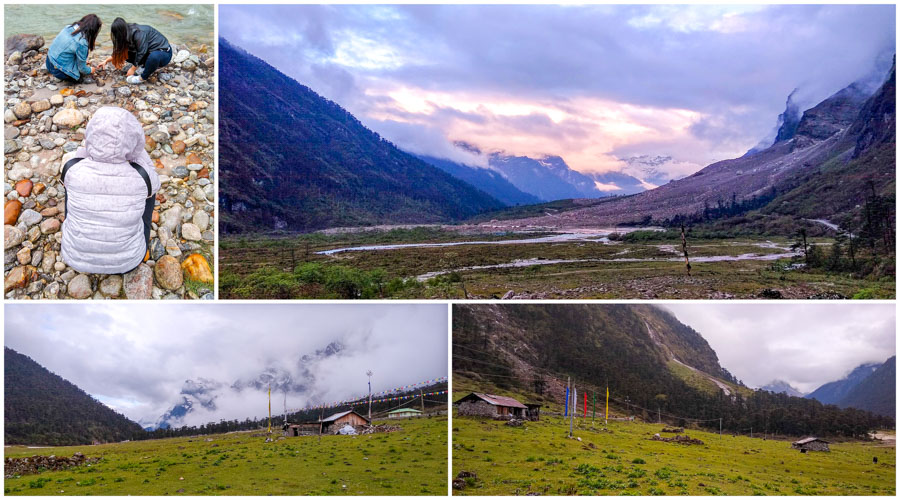
PERMITS & PERMISSIONS:
Tourists need to apply for protected area permits (PAP) to visit Lachung / Yumthang / Zero Point as these places are near the international border of China and thus are under the control of the Indian Army. The permits can be obtained from the Gangtok Tourism Office, District Administrative Center at Mangan, or at Chungthang Sub-Divisional Magistrate’s Office. If travelling via an agency, your tour operator will arrange these permits for you.
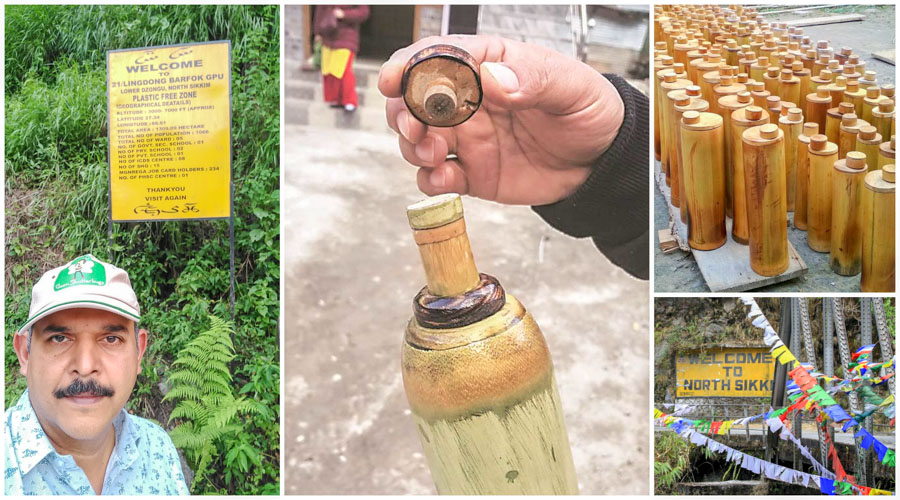
NORTH SIKKIM IS A PLASTIC FREE ZONE.
Single use plastic is strictly prohibited.
https://curlytales.com/sikkims-lachen-to-introduce-bamboo-water-bottles-for-tourists
https://www.theweek.in/news/india/2020/03/02/sikkim-introduces-bamboo-water-bottles-for-tourists.html
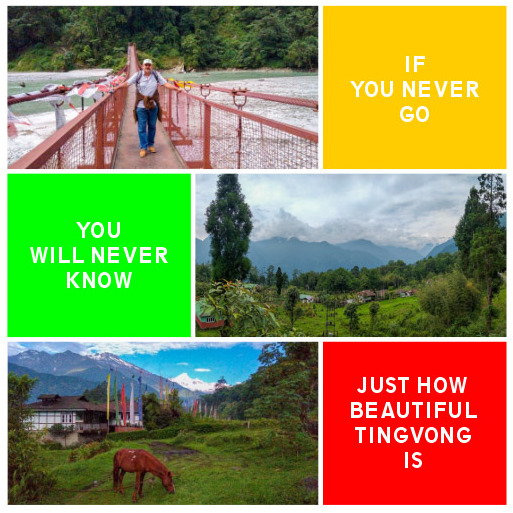
Tomorrow we conclude this travelogue, in the final leg of the journey Let’s Travel to Tingvong.
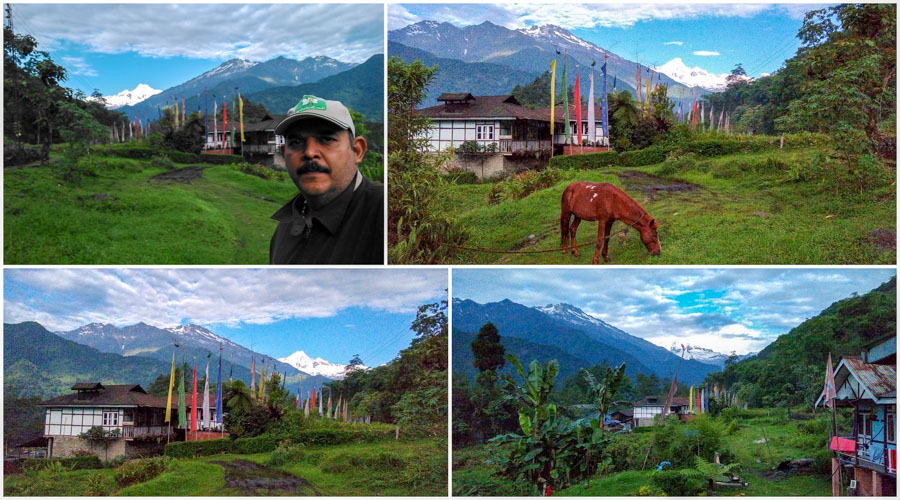
TINGVONG
Today in the concluding episode of the Sikkim travelogue, prepare to be transported, albeit momentarily, to a place which is preserved in tranquility, a fairytale mountain world of its own, to Tingvong a little paradise in Dzongu, North Sikkim.
Let me tell you something important before we go.
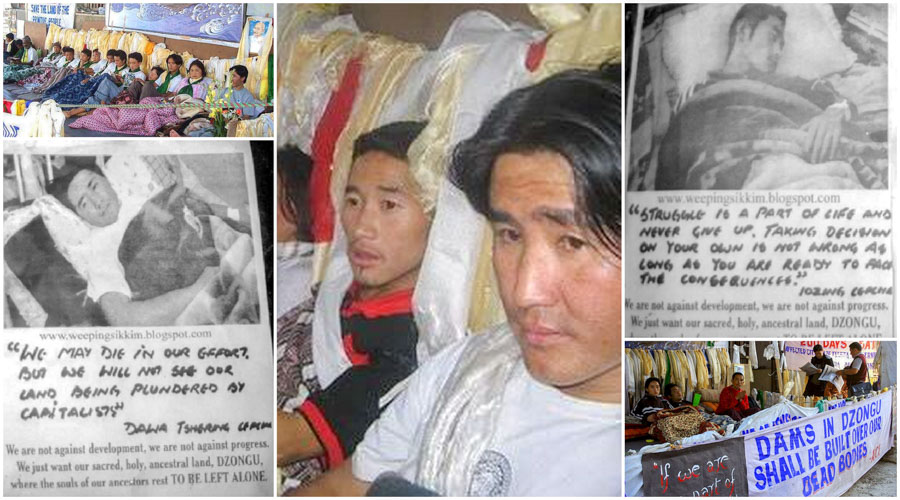
ACT – Affected Citizens of Teesta
In 2007, the then Chief Minister of Sikkim, Mr. Pawan Chamling announced the construction of 30-plus major hydro power projects across Sikkim and seven of them were projected to be built in Dzongu, North Sikkim.
Dzongu is an area reserved for the Lepchas, the original inhabitants of Sikkim, bordering the Kanchendzonga Biosphere Reserve. The Lepcha Communities in Dzongu live in relative isolation from the outside world with their own traditional practices and beliefs.
The locals believed that the hydro projects would prove to be detrimental for their natural habitat and slowly disintegrate the biosphere at large. This resulted in bitter strife between the authorities and the Lepchas of Dzongu, as the ecology of the region is sacrosanct for them.
The threat was vehemently opposed with two Lepcha youths Dawa T. Lepcha and Tenzing Lepcha going on hunger strike from June 22, 2007 to September 27, 2009 till finally, 6 projects were cancelled.
http://www.actsikkim.com
http://weepingsikkim.blogspot.com
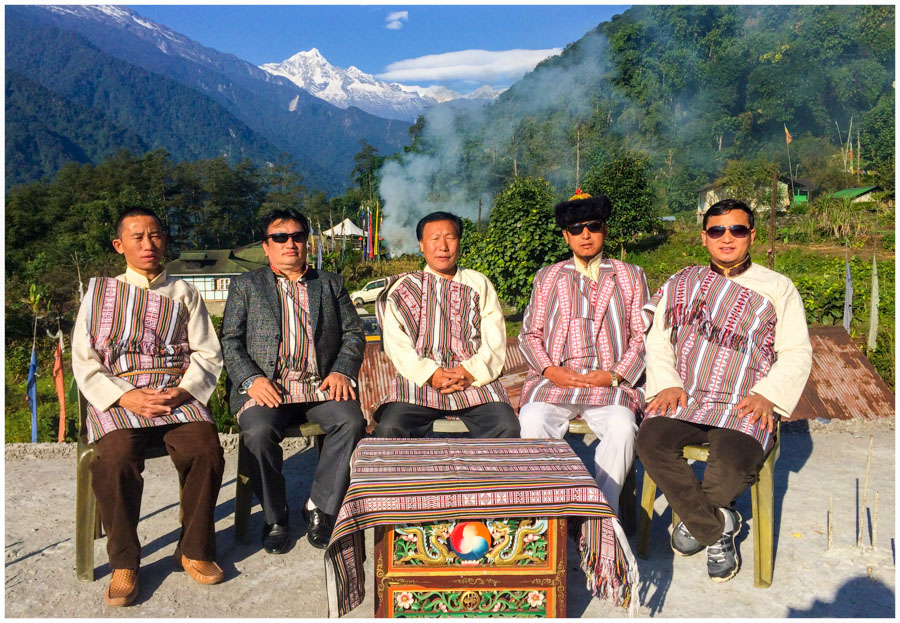
I was informed of this by fellow passengers, when I took a shared taxi from Gangtok to Mangan enroute to Tingvong. Being the only non-Sikkimese traveller in the taxi, they asked where I was headed, when replied I was going to Sherap’s home to stay, they informed me about the same. Sherap and his brother Pema were the main organizers of the movement and their entire family is highly regarded in Dzongu for their social service and philanthropic work.
Pic: Sherap Lepcha (extreme right) with his brothers.
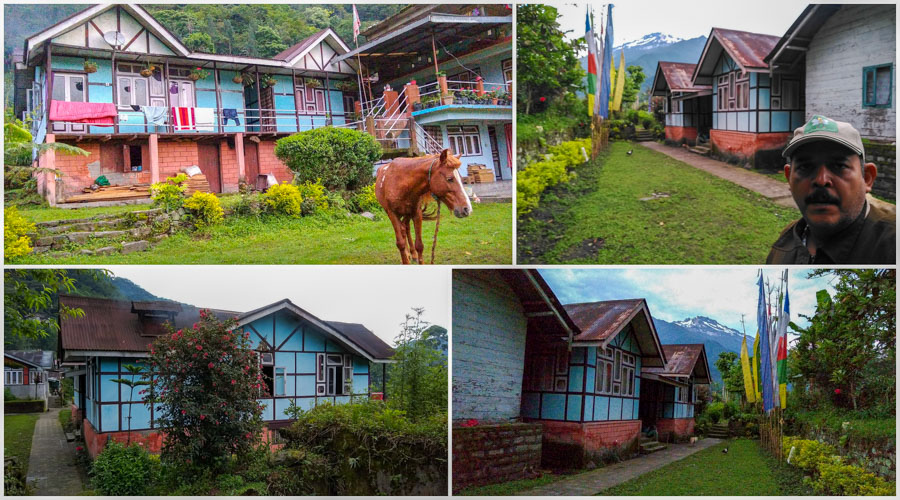
Tingvong is the village Sherap calls home, where his brother Drupden and family manages a homestay, a part of their house is converted into one.
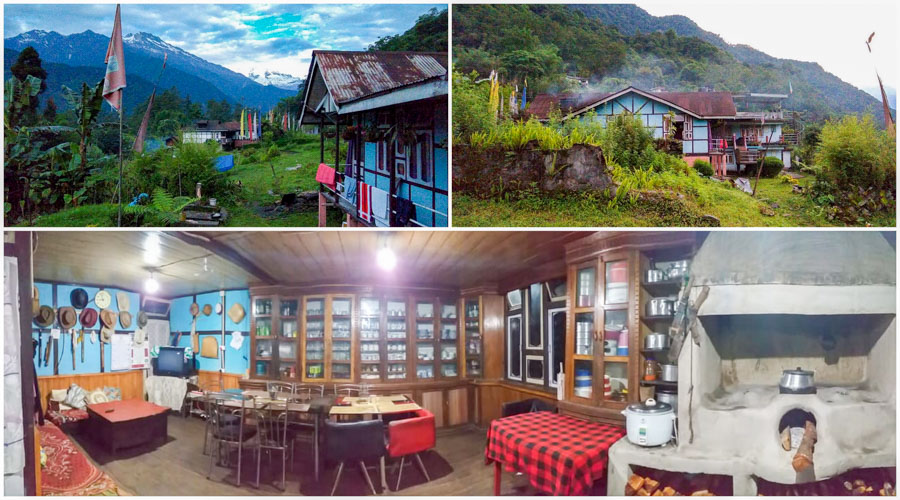
The homestay has 8 simple but comfortable rooms with couple of common bathrooms for guests to use.
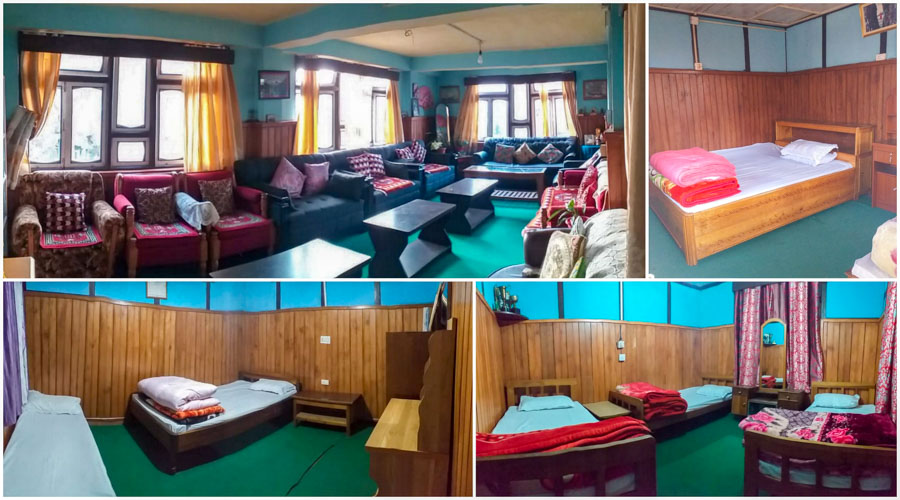
Contact: Chultim Lepcha: 80016 75241, Drupden Lepcha : 95937 83043
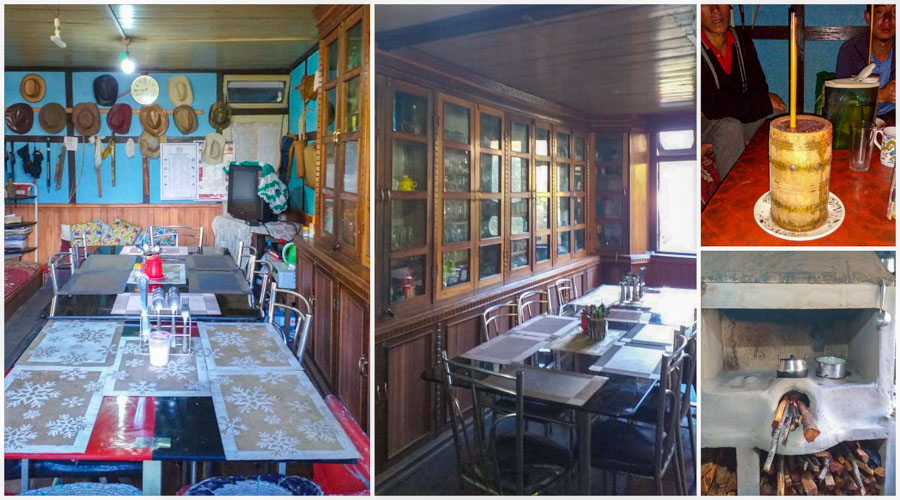
Agni & Amrita have written a detailed travel guide to Tingvong and about their homestay, click the link to read more
https://taleof2backpackers.com/tinvong-dzongu-sikkim
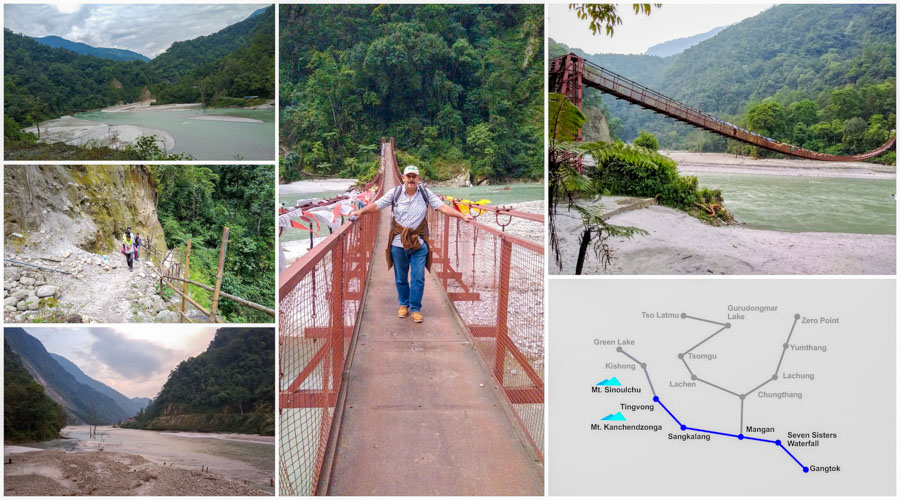
HOW TO GET THERE:
The journey to Tingvong is an adventure in itself
Gangtok to Mangan
Distance: 70 kms, Time: 3 hours
Private or shared taxis available for hire from Vajra Taxi Stand

Mangan to Sankalang, onto Passingdong
Distance: 15 kms, Time: 1 hour
Taxis on hire available.
Special permits issued by the Government of India are required for entry into the Dzongu Lepcha reserve.
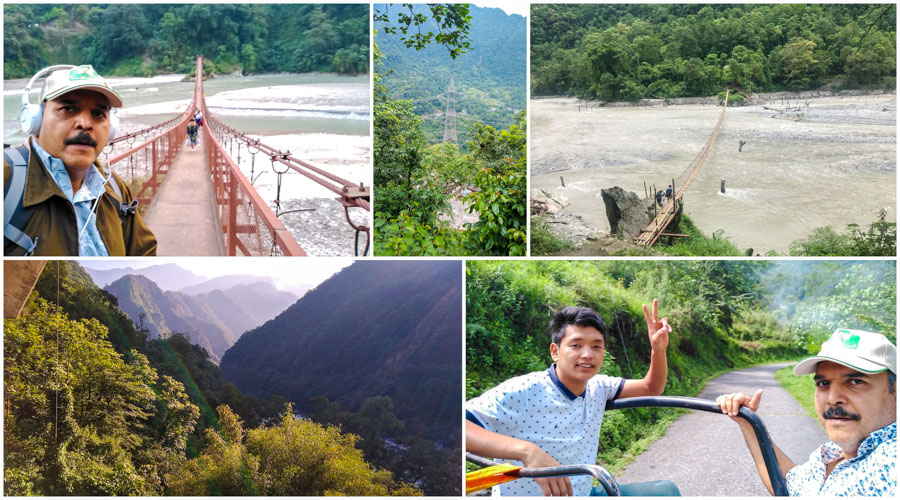
To the homestay in Tingvong
Distance: 10 kms, Time: 30 minutes
From Passingdong cross the bridge on foot (unfortunately, this bridge collapsed into the river a few weeks after I went over it, the end pillar support got washed away….. do not blame me….. now a temporary bamboo bridge has been built), then take a 4W drive to the homestay.
pic (BR): that’s Chultim who will be your host in Tingvong.
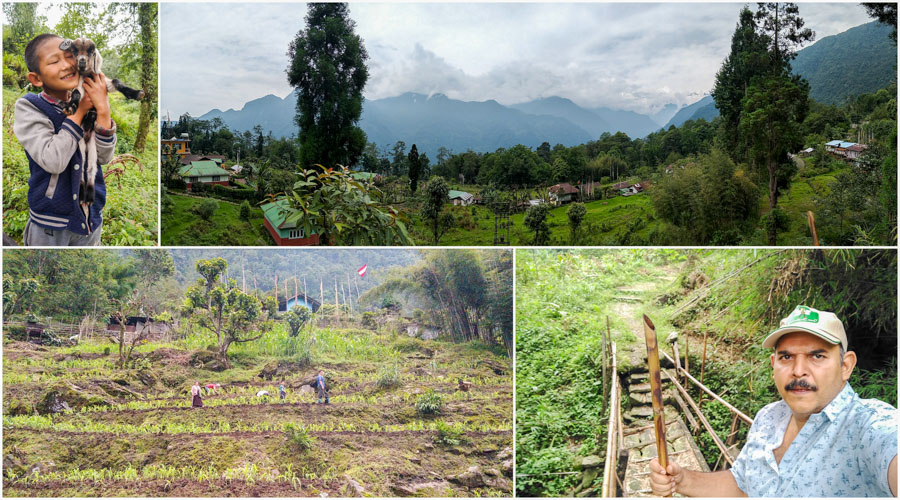
THINGS TO DO IN TINGVONG / DZONGU
Its the perfect place if you are seeking for peace amidst nature. Just sitting and enjoying the cool mountain air is an option too! Hike through the dense forests and trek in the pristine mountains.
Met a Scottish couple at the homestay who had just returned from a 10 day trek in the Pandim mountains. They were doing research on high altitude flora and had gone with a support team of a guide, 3 porters and a cook.
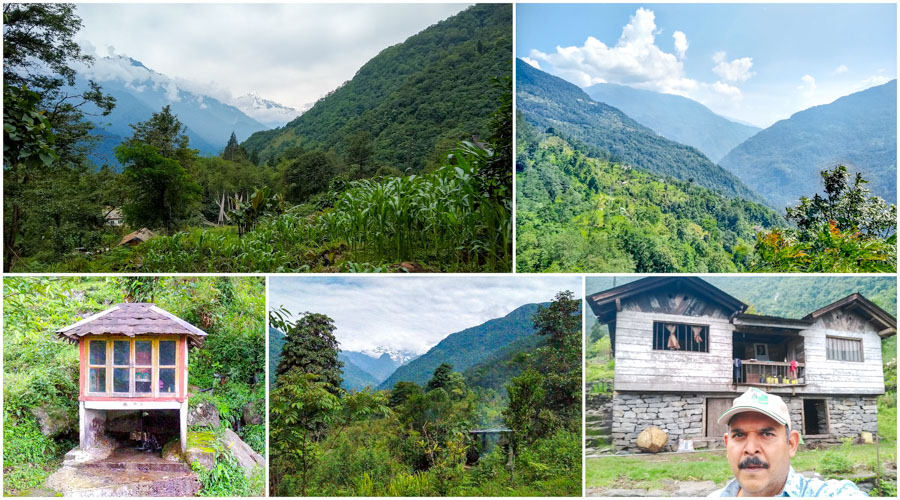
The place is blessed with immense natural beauty and stunning landscapes. The lifestyle of the Lepchas is also in communion with nature.
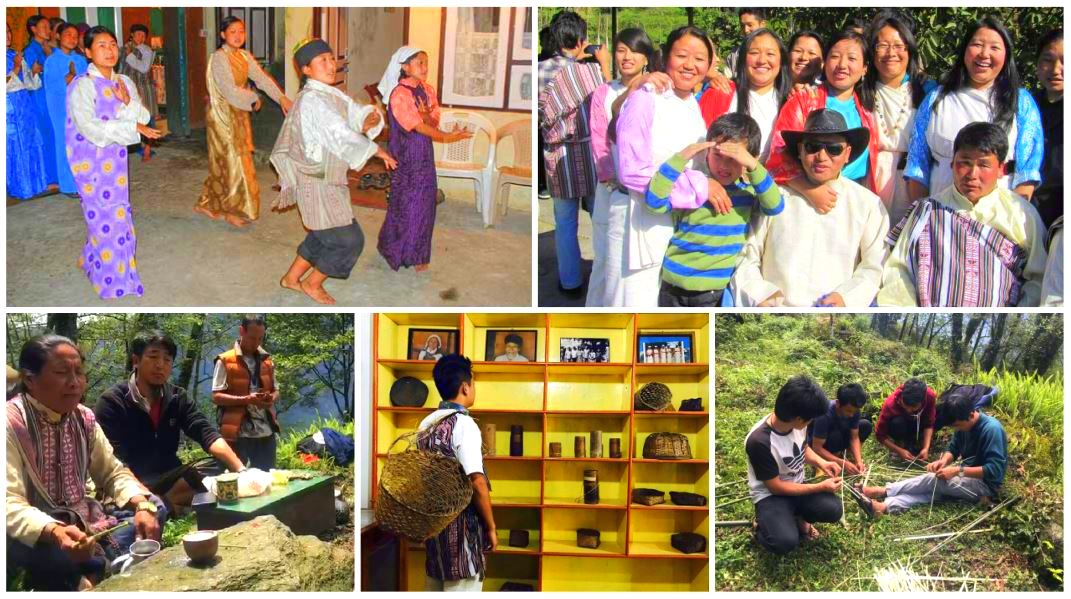
Listen to the enchanting tales that the members of the Vanishing Tribe have to tell. Enjoy the Lepcha food and hospitality.
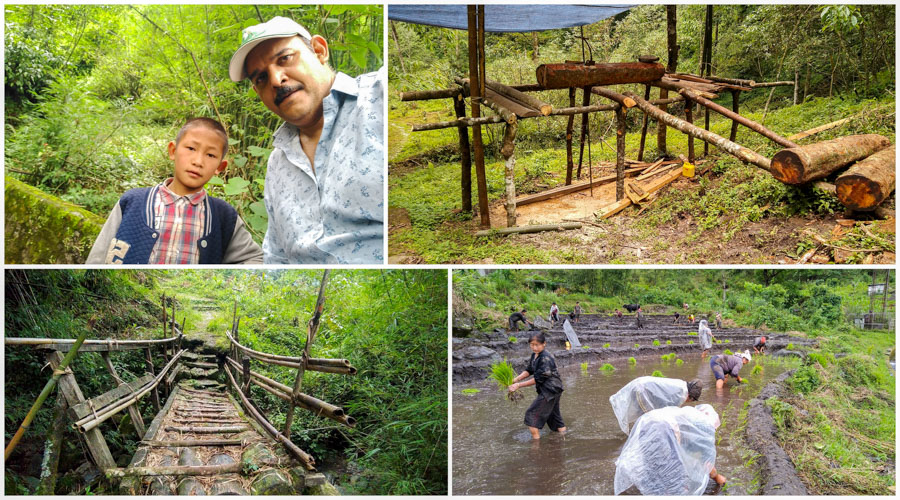
It is a perfect place if you are seeking for peace amidst nature.
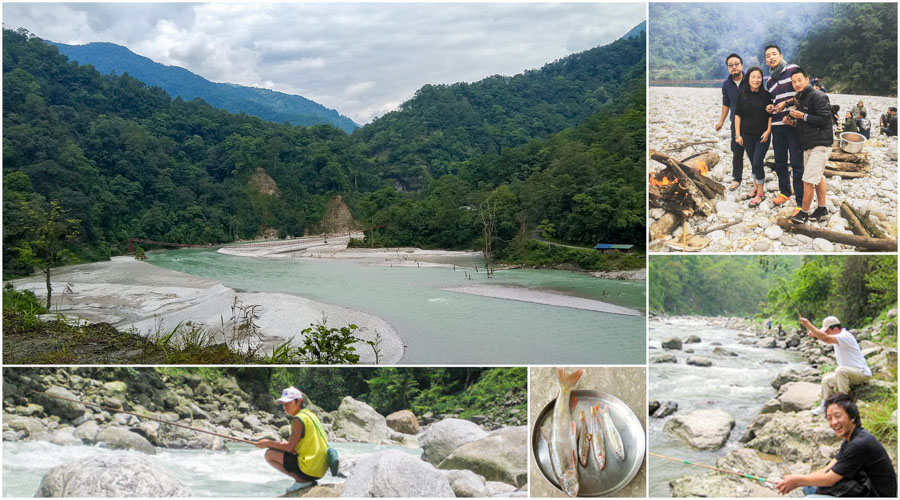
Catch fish in the Rongyung Chu River to have it cooked later. Silver Trout and Rainbow Trout are the most favourite species of fish among anglers.
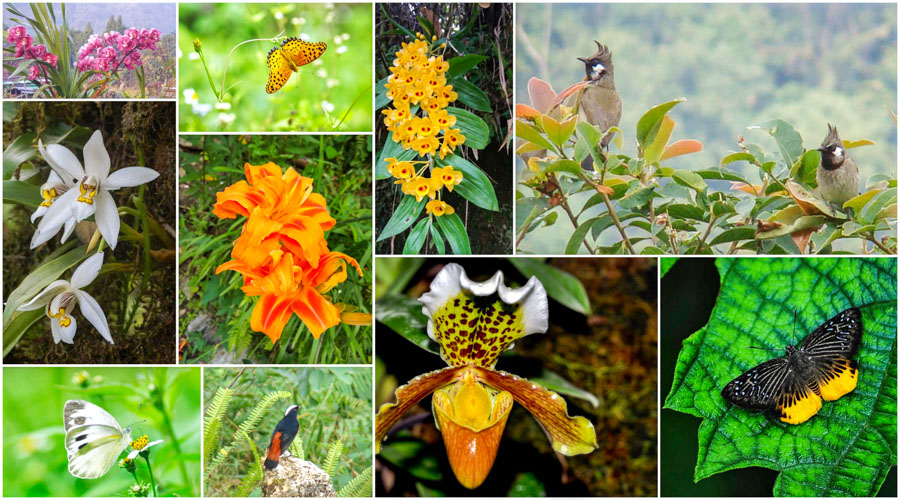
Go bird watching or butterfly or orchid watching. There are more than 200 species of birds and around 70 species of butterflies and 100’s of orchids flowering in Dzongu.

For more about Tingvong read the blog written by Dheeraj Sharma – Devil On Wheels
https://devilonwheels.com/dzongu-the-little-known-paradise-rumlyang-of-the-lepchas
and an article by Karan Kaushik in Outlook Traveller
https://www.outlookindia.com/outlooktraveller/explore/story/70196/sikkims-best-kept-secret-dzongu-is-the-solo-travellers-paradise
Top pic, that’s the football ground Sherap grew up playing in Tingvong. Bhaichung was born in the village of Tinkitam in South Sikkim. Both of them were selected at the age of 10 to be part of the Sports Academy of India football scholarship program and were based and studied at the Tashi Namgyal Academy in Gangtok.
To the quiz question : Who is the player to his left, who also had an illustrious career with Churchill Brothers??
It is Somatai ‘Soso’ Saiza. Soso was also part of the same program but based in his home state of Manipur.
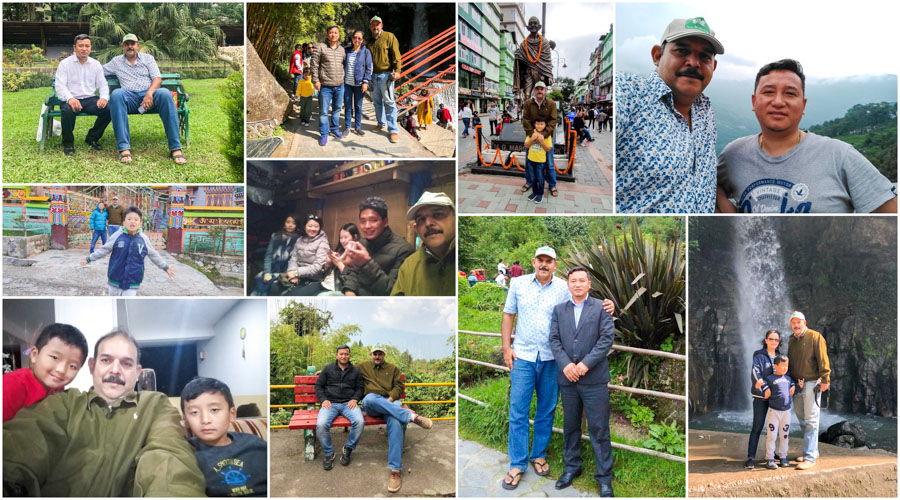
That’s all folks!
I hope this travelogue inspired you. If you have decided to add Sikkim to your own bucket list, do not wait two decades like I did.
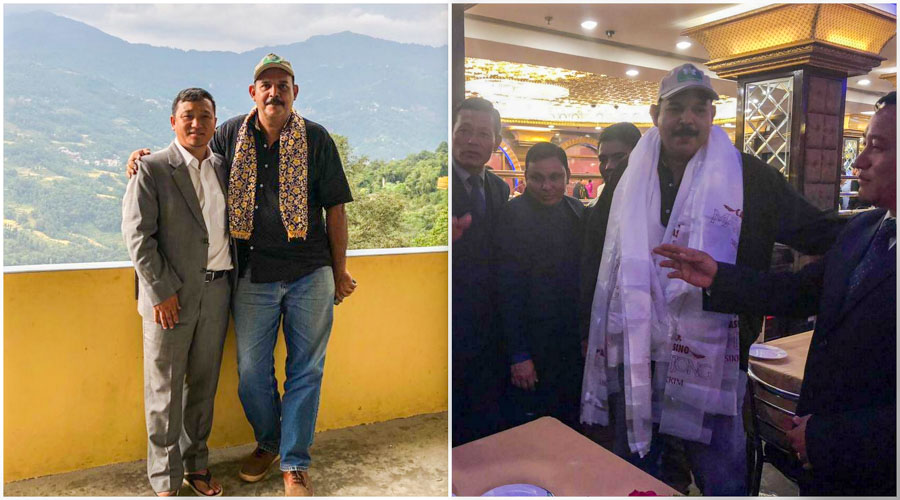
FYI: A hada, khata, katak, or khada is a traditional ceremonial scarf that symbolizes purity and compassion and is worn or presented with incense at many ceremonial occasions, including births, weddings, funerals, graduations and the arrival or departure of guests. It is usually made of silk.
It originated in Tibetan culture and is common in cultures and countries where Tibetan Buddhism is practised or has strong influence. Tibetan khatas are usually white, symbolising the pure heart of the giver, though it is quite common to find yellow-gold khata as well.

Hello / Namaste
Khamri – Lepcha
Kujozangpo la – Bhutia
Tashi Delek – Tibetan
Thank You
Toktse – Lepcha
Thucheychay la – Bhutia
Thuk je che – Tibetan
Toktse atem Karishma arey Renjyong sa sung translate maath bo ka. – Lepcha
Thank you Karishma for doing an amazing job in editing this Sikkim travelogue.
pic: kids from Tingvong

Lynn Barreto Miranda
p: 9822151419 | e: lynn@barretomiranda.com | w: lynn.barretomiranda.com
If you need any more information, feel free to contact me.
This presentation was put together and shared on the Let’s Travel whatsapp group across four days in April 2020.
Let’s Travel is a whatsapp group created by travel enthusiasts to share their travel stories and memories.
Its an open group, to join click the link: https://chat.whatsapp.com/ITeMEV5DQkr8SiPP7Wak5R
#travelstories #whatsappstories #letstravel

